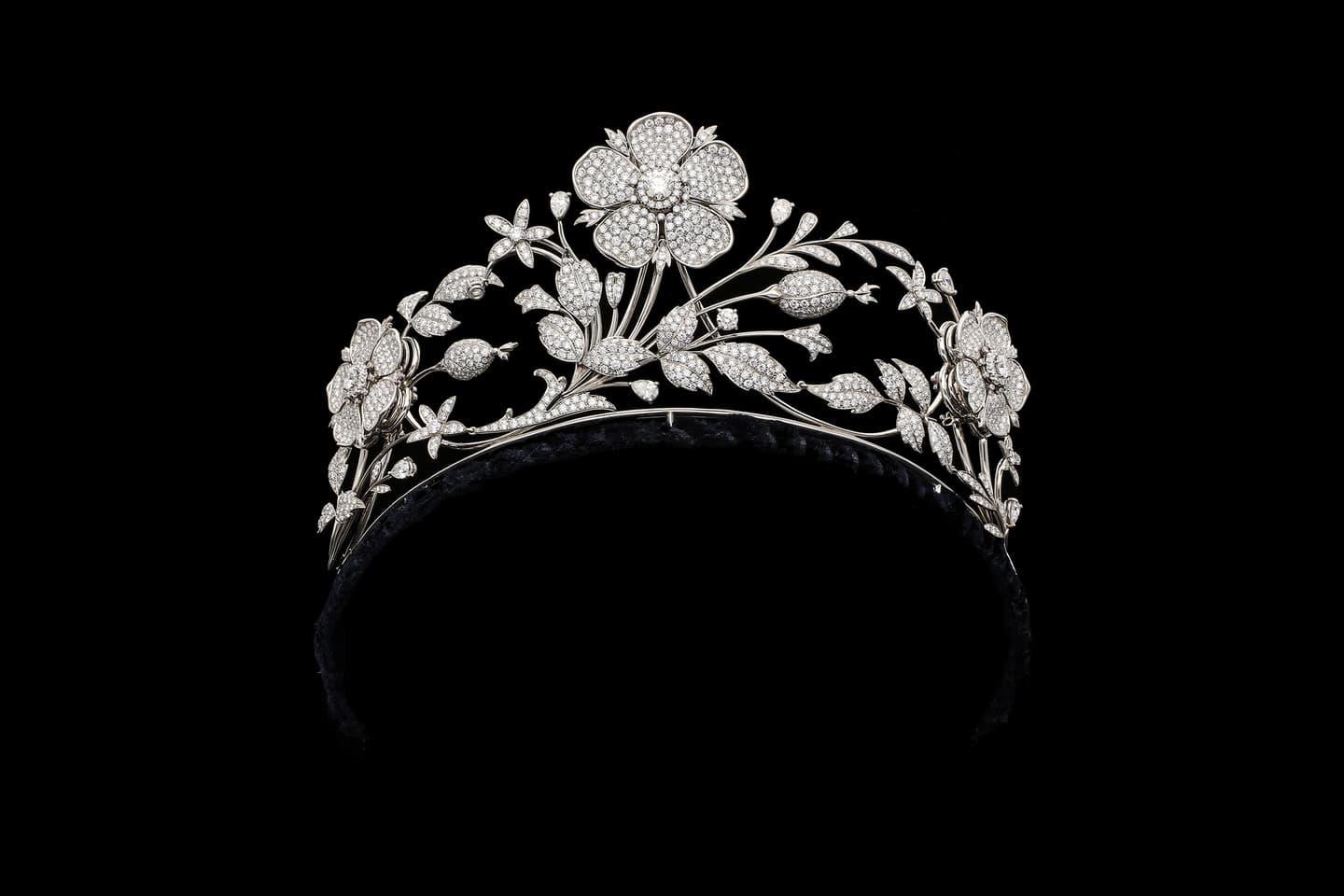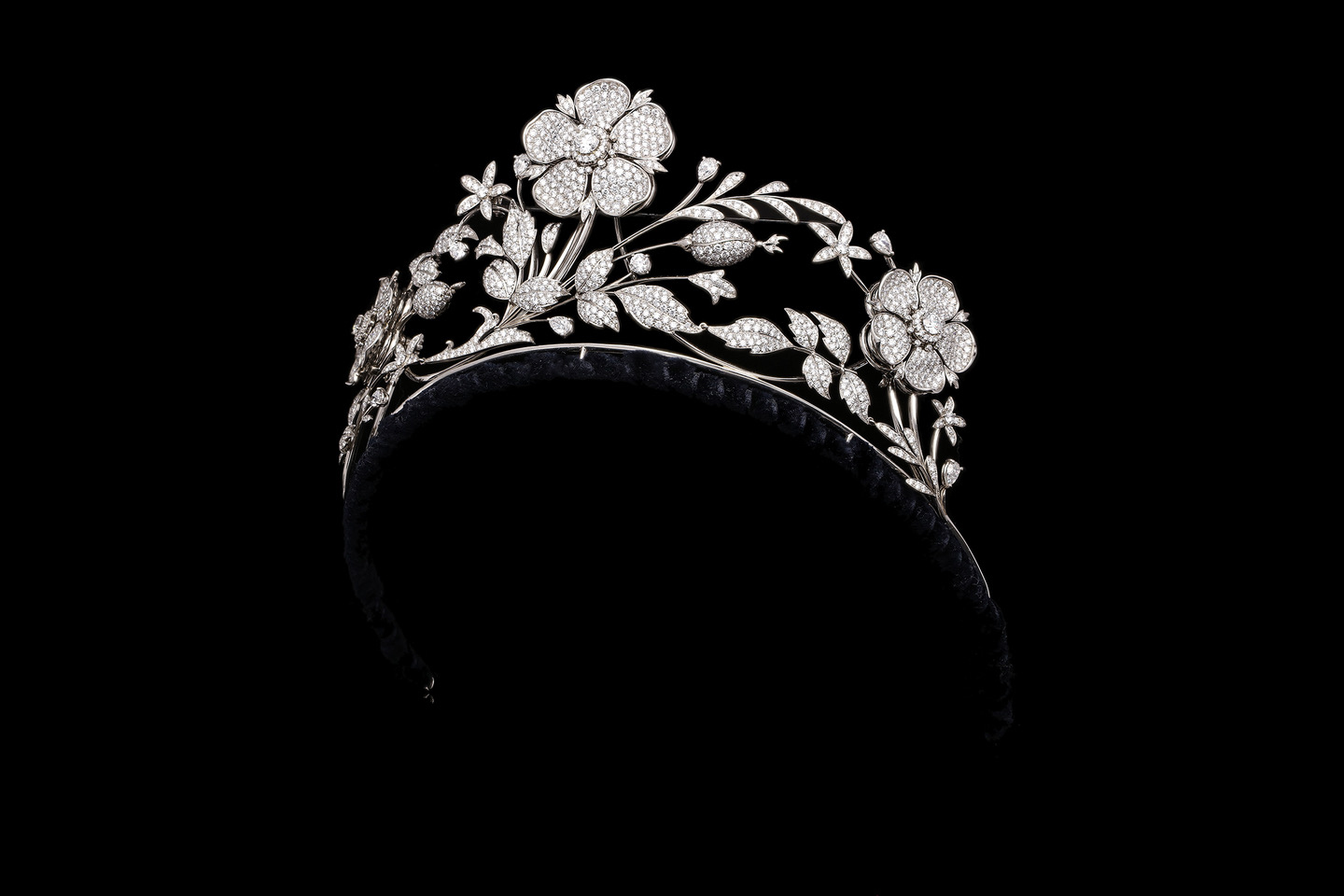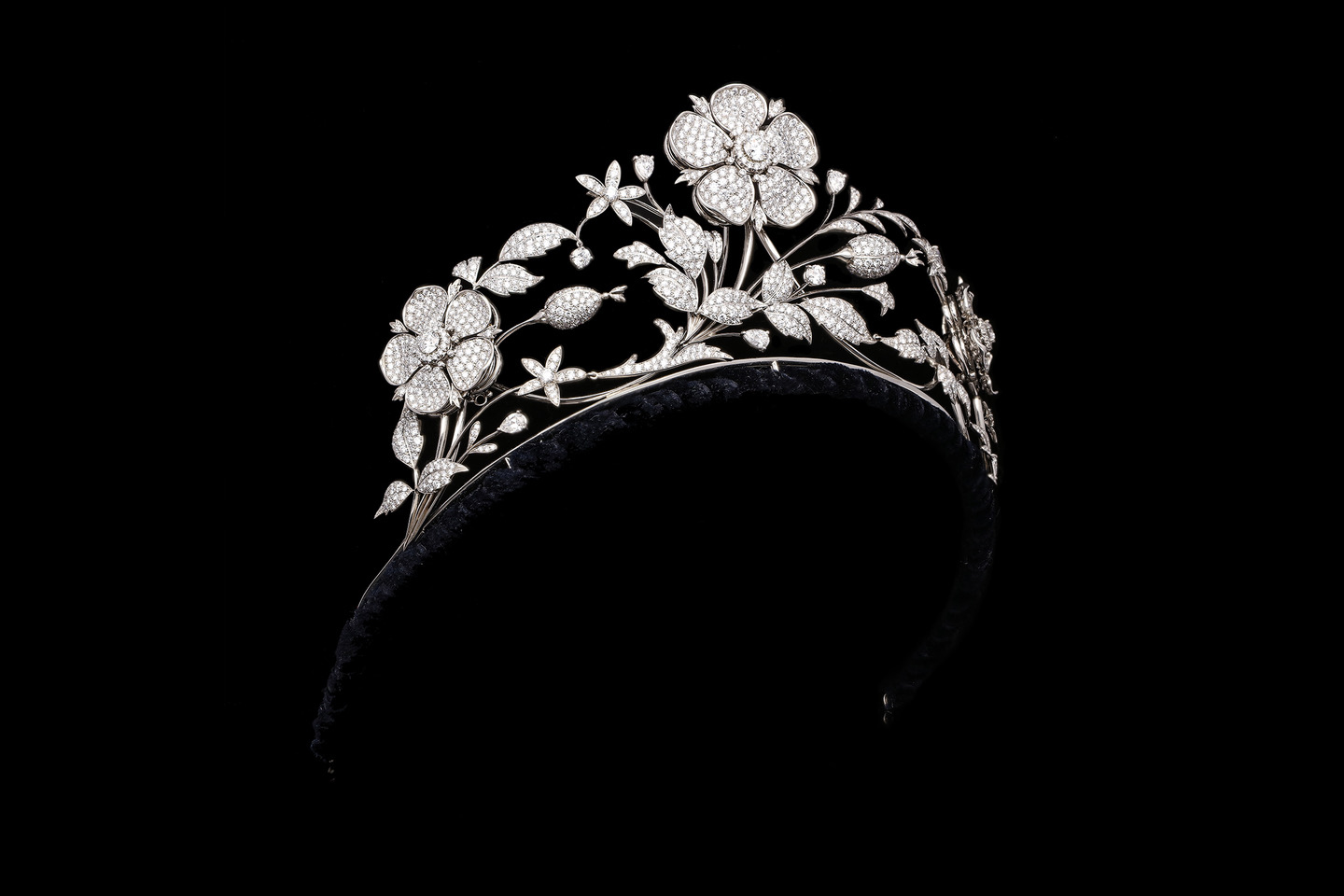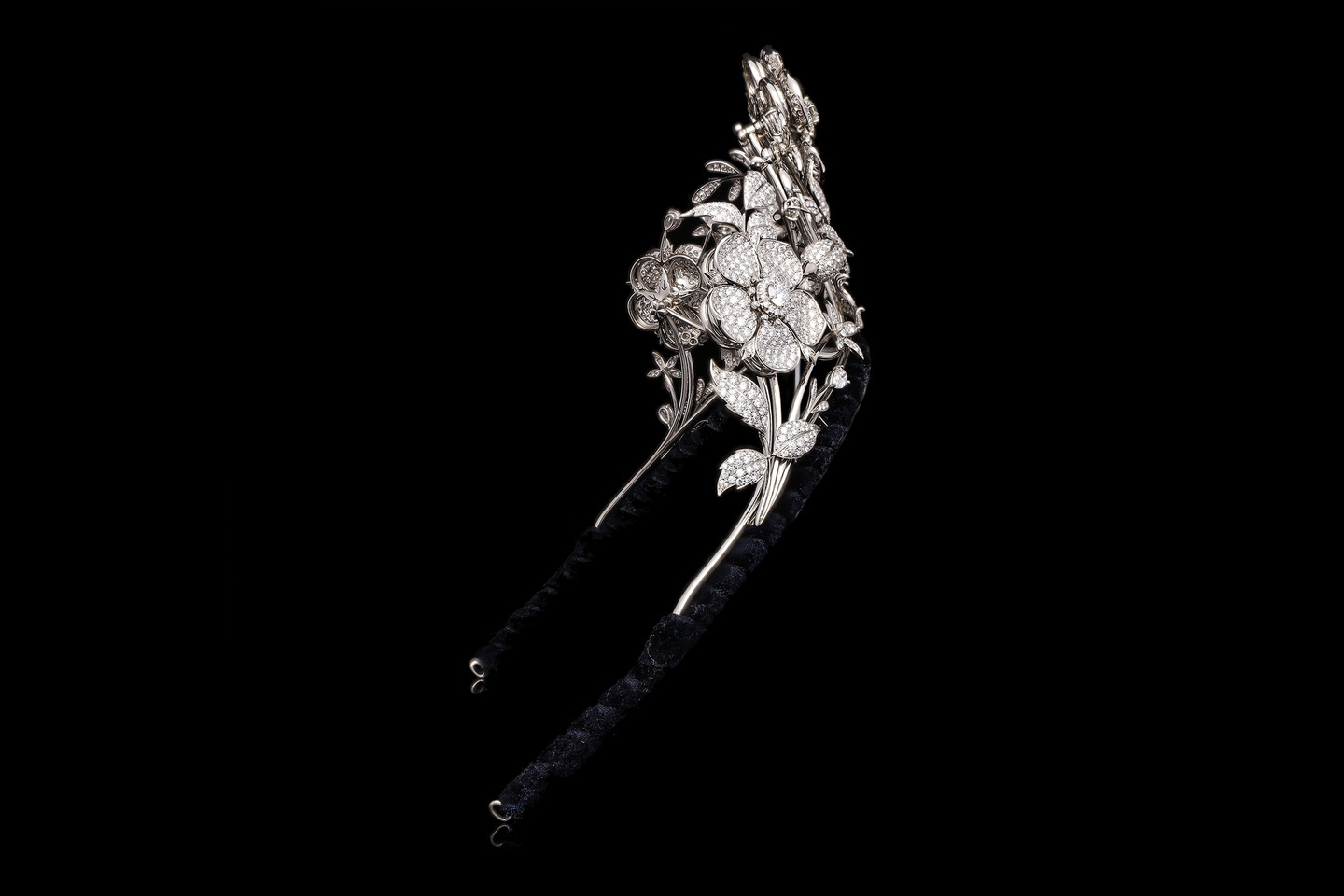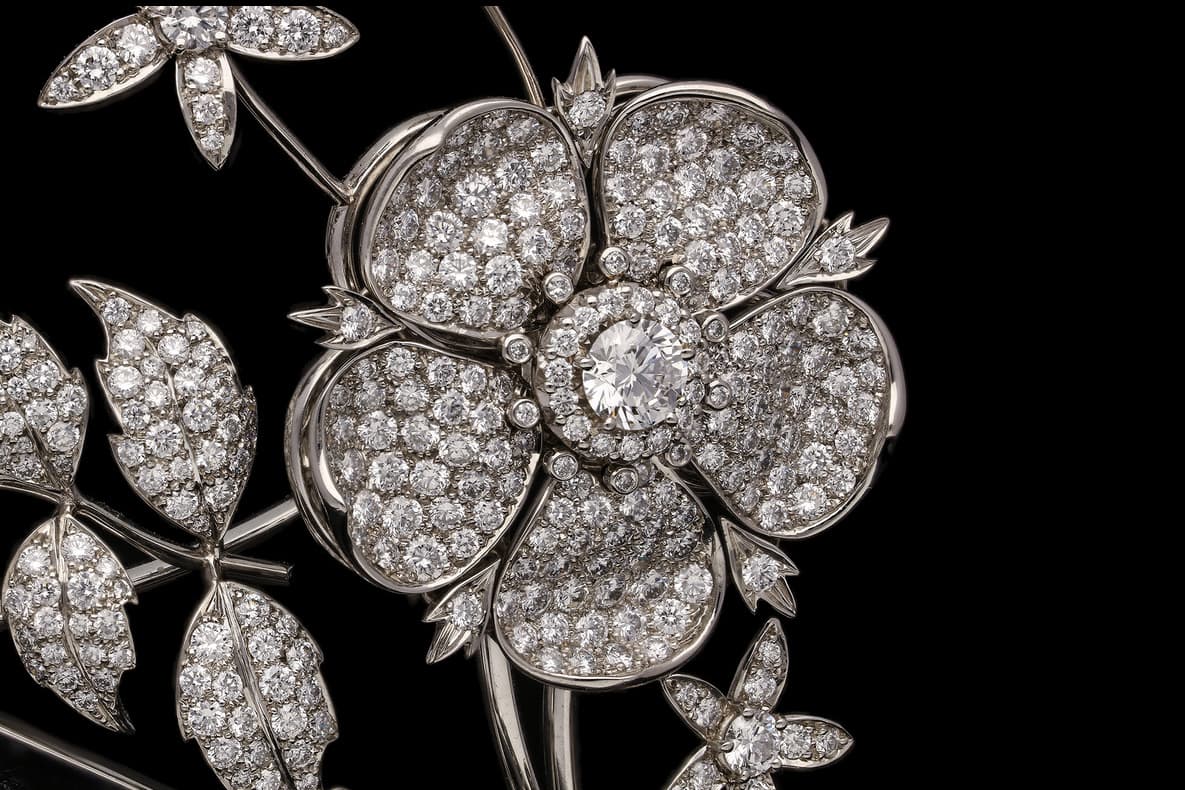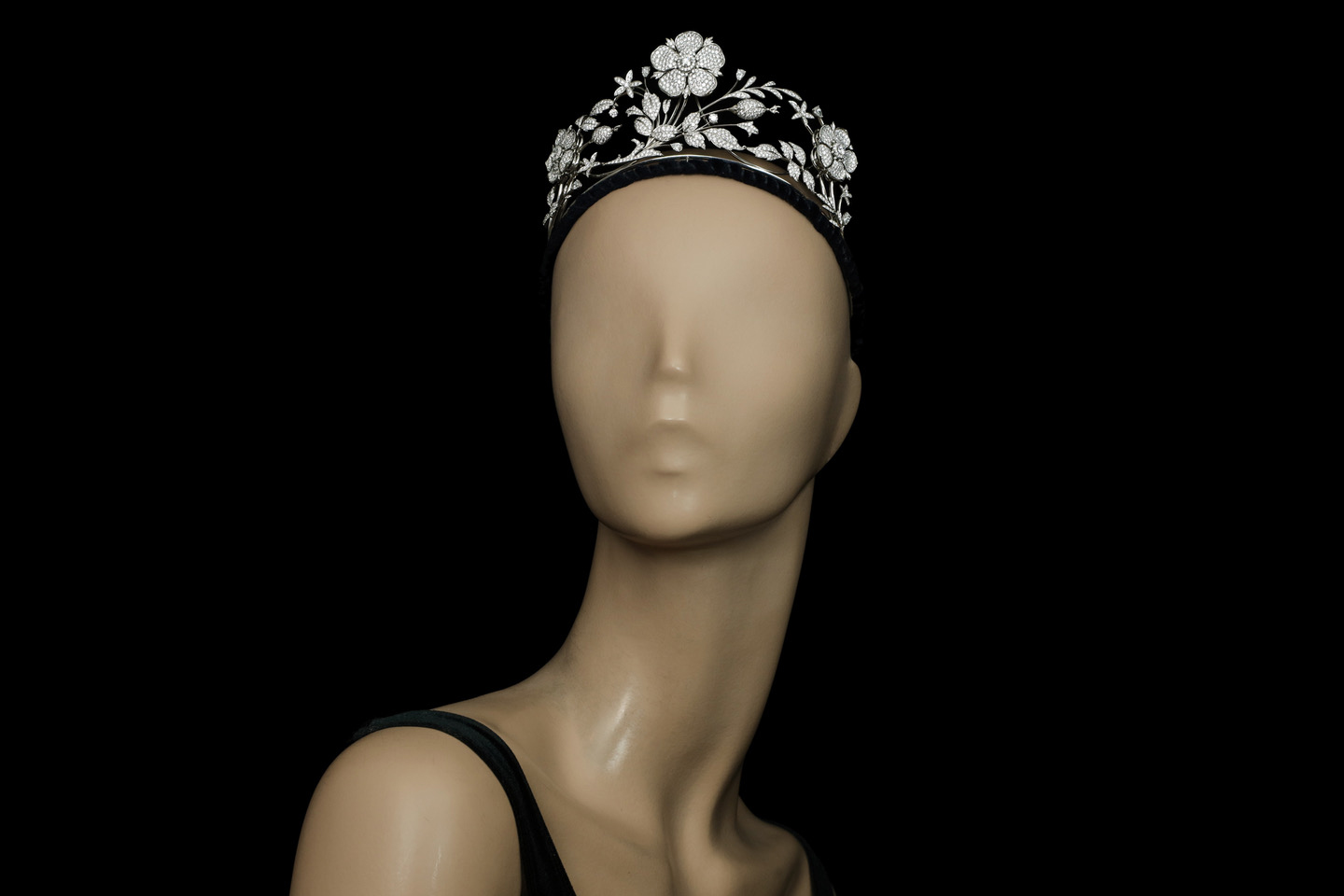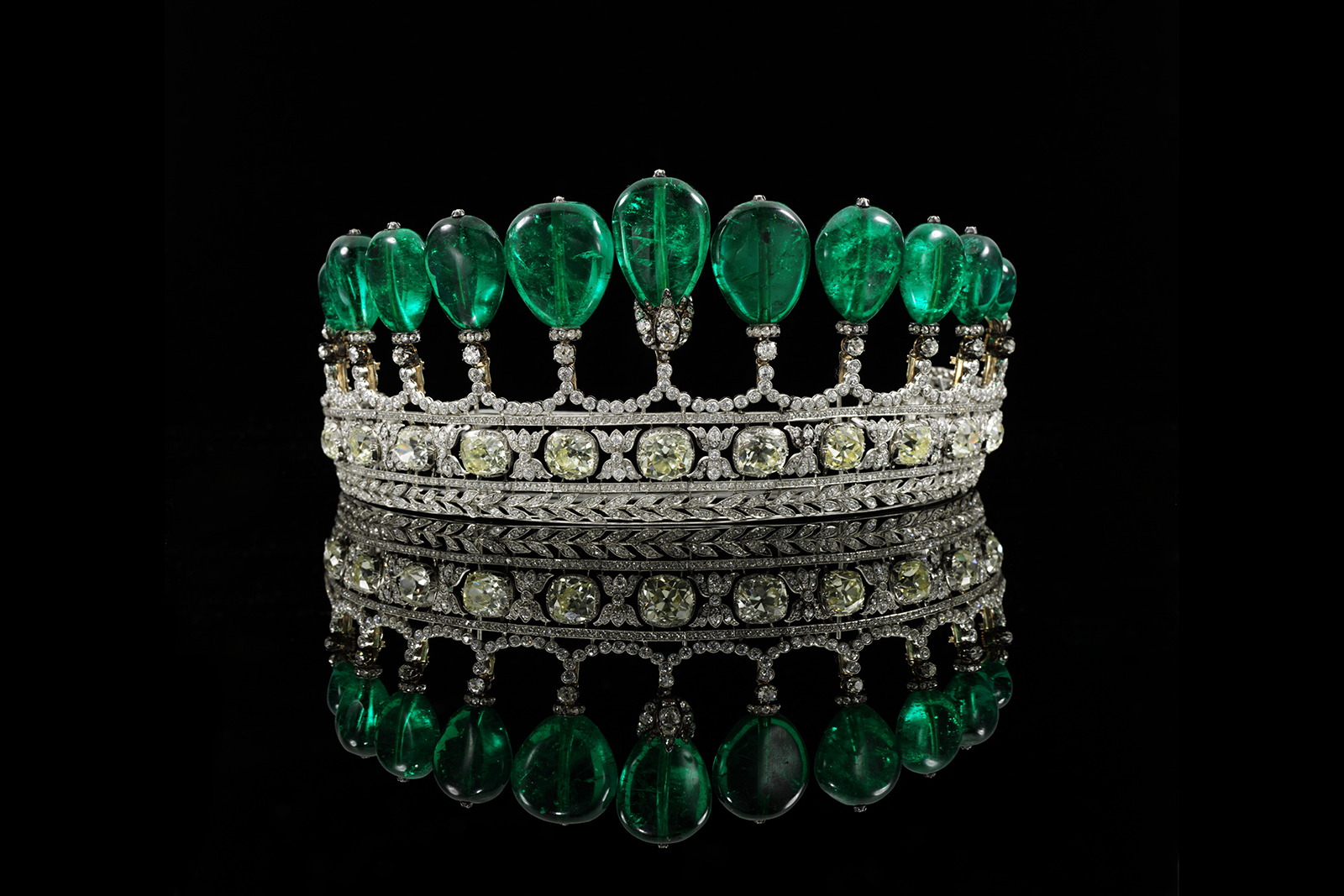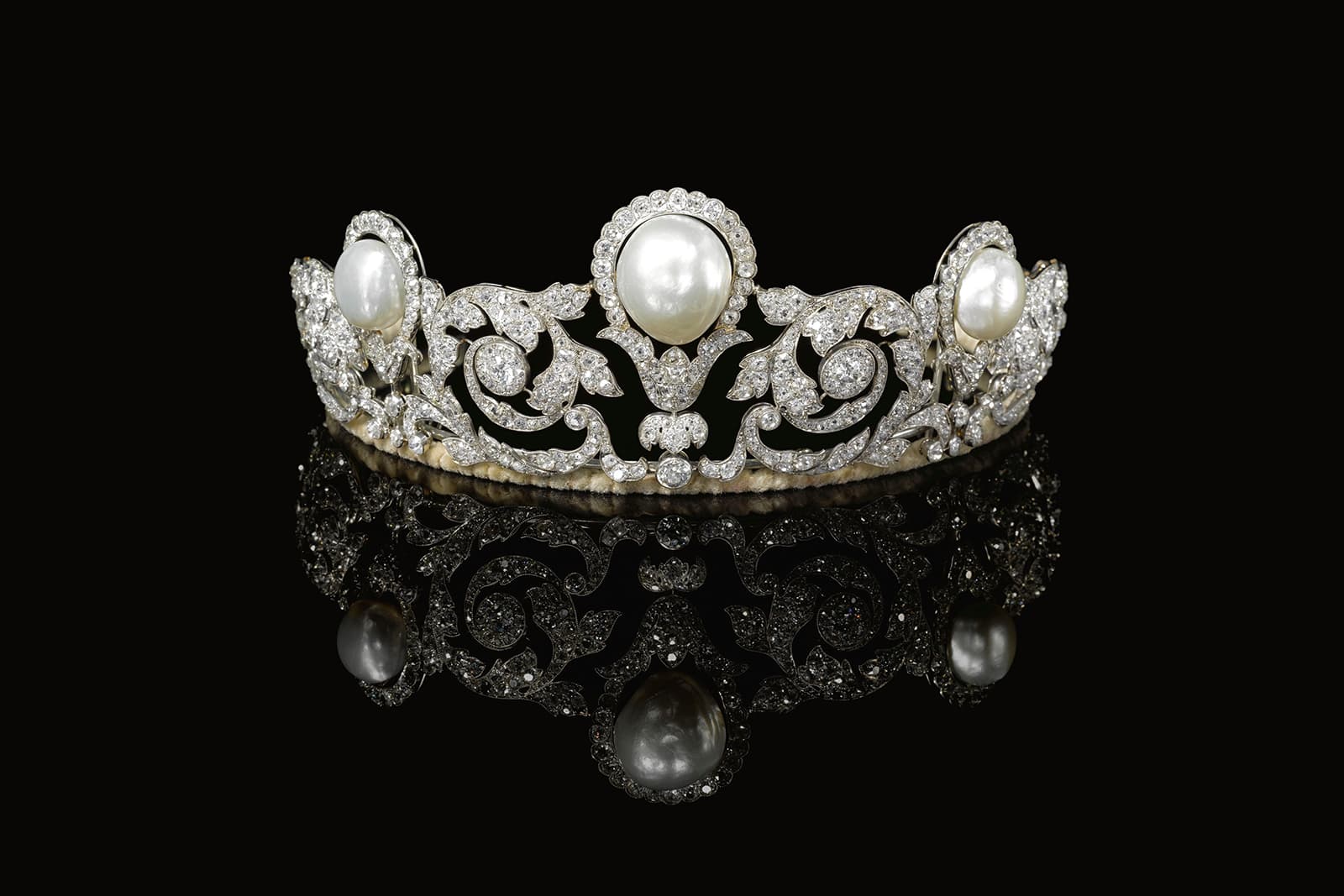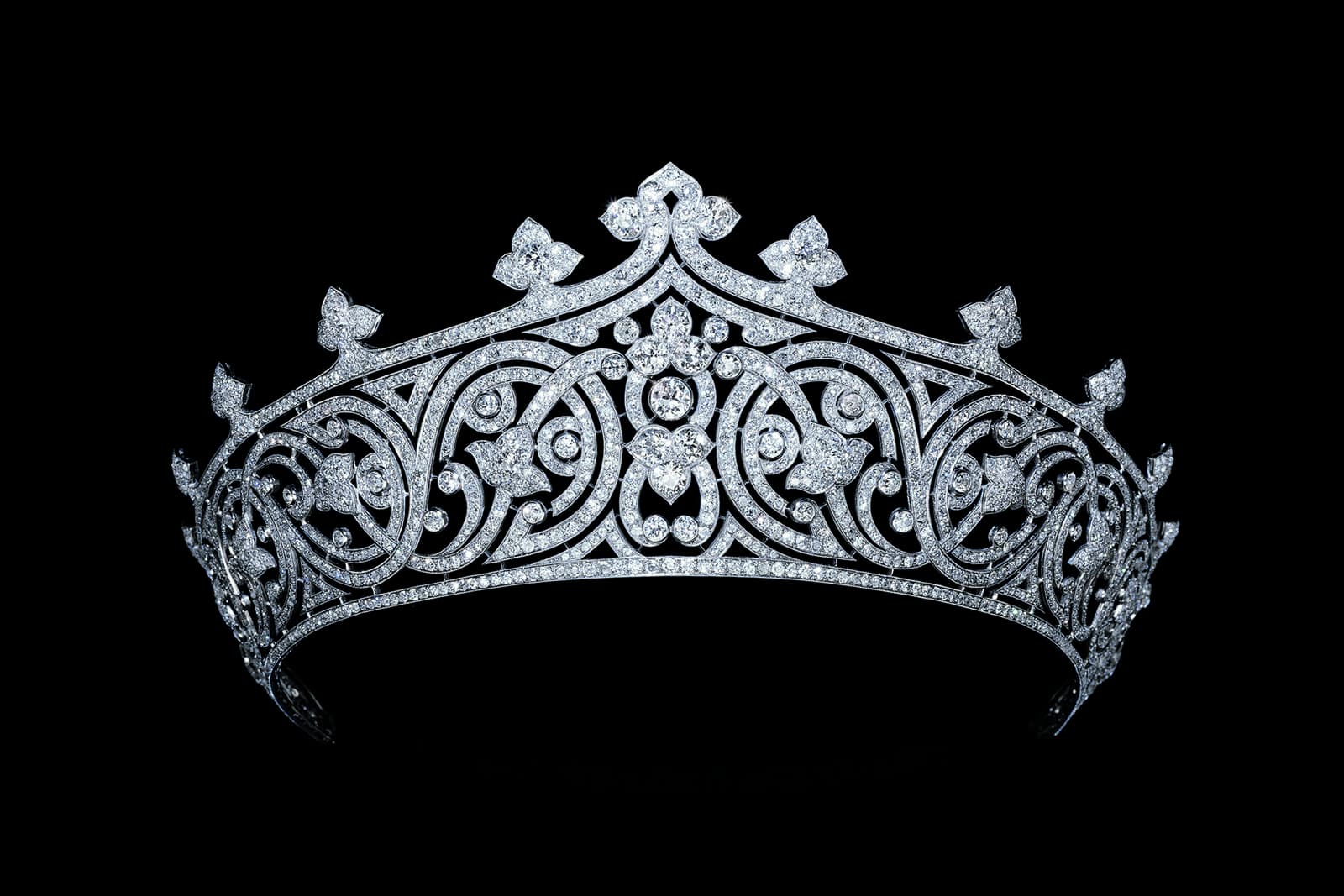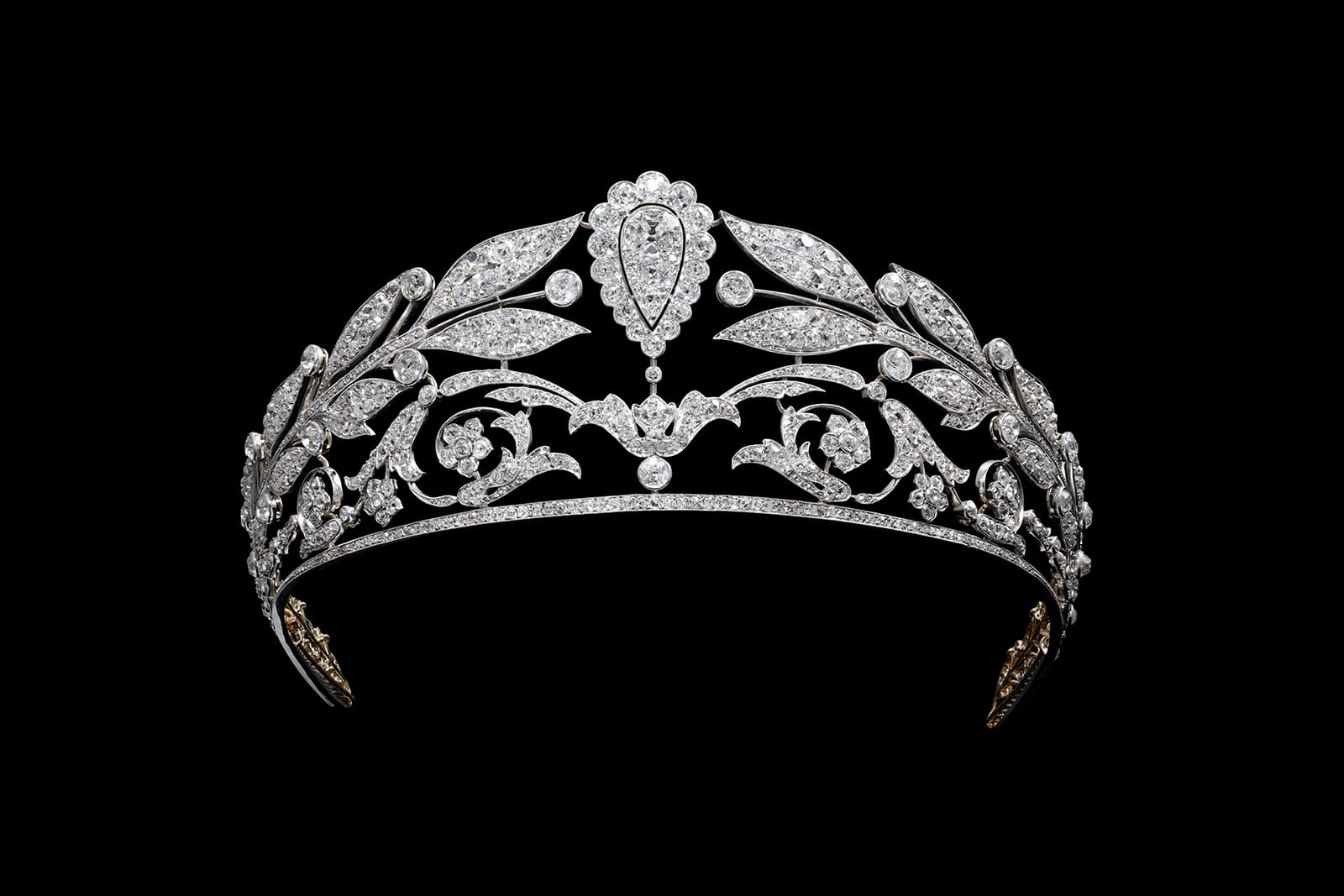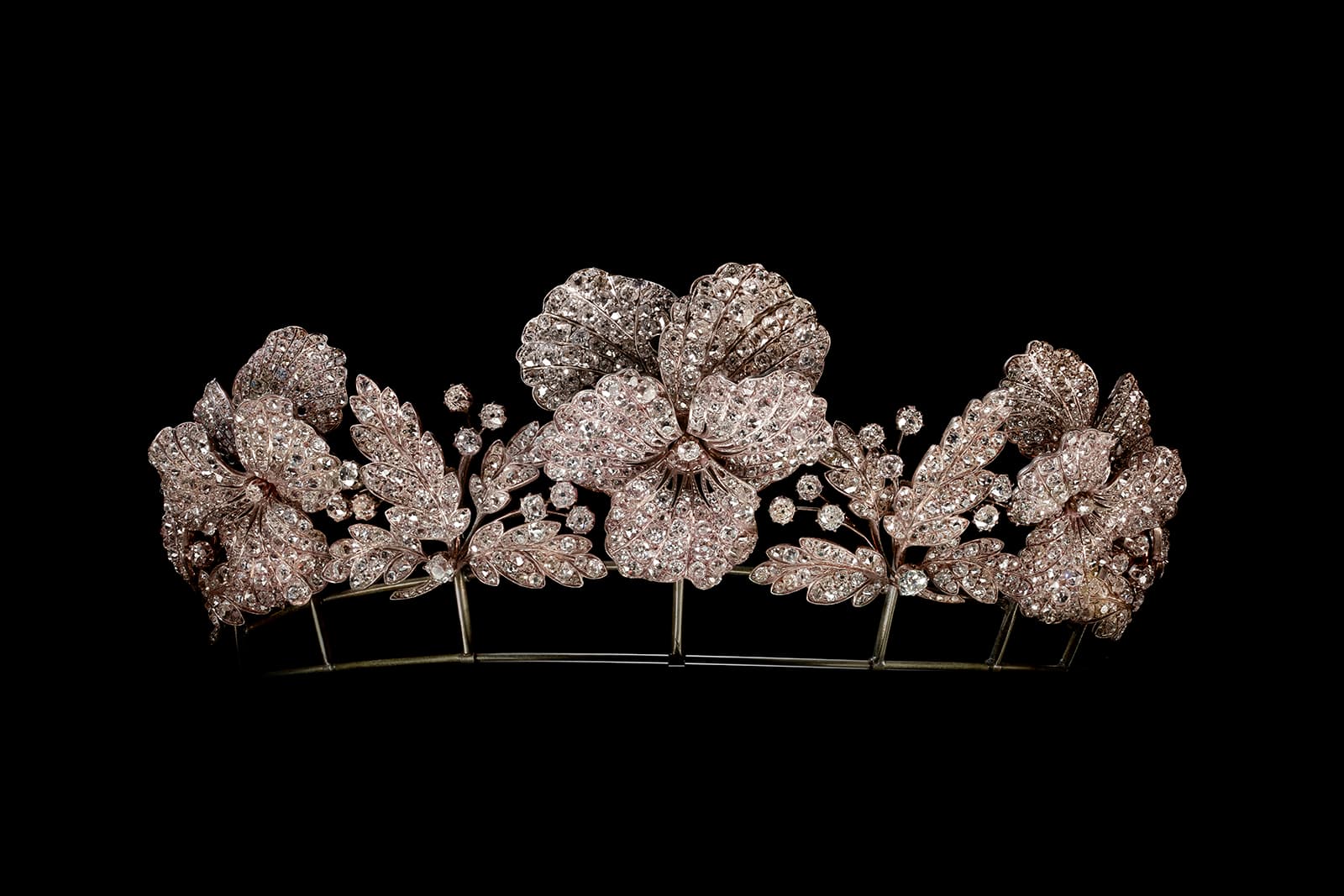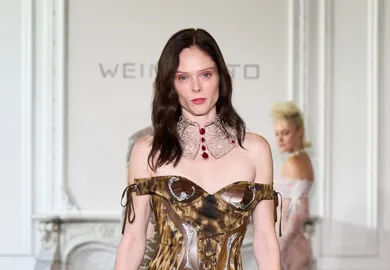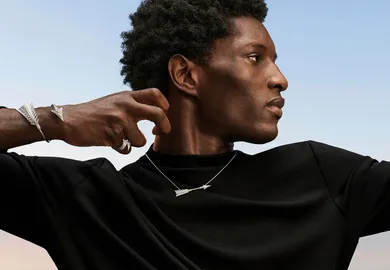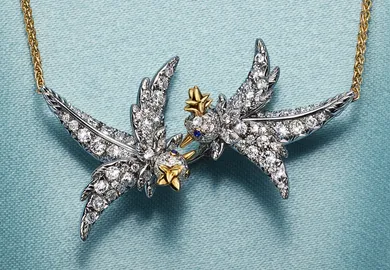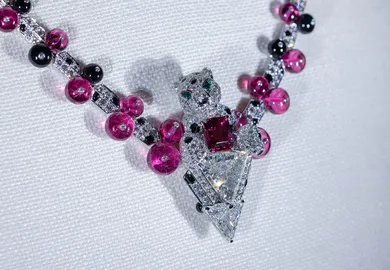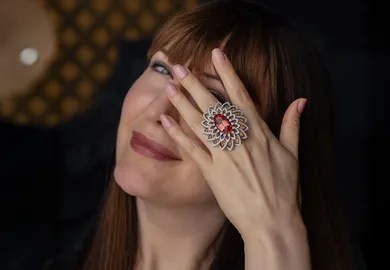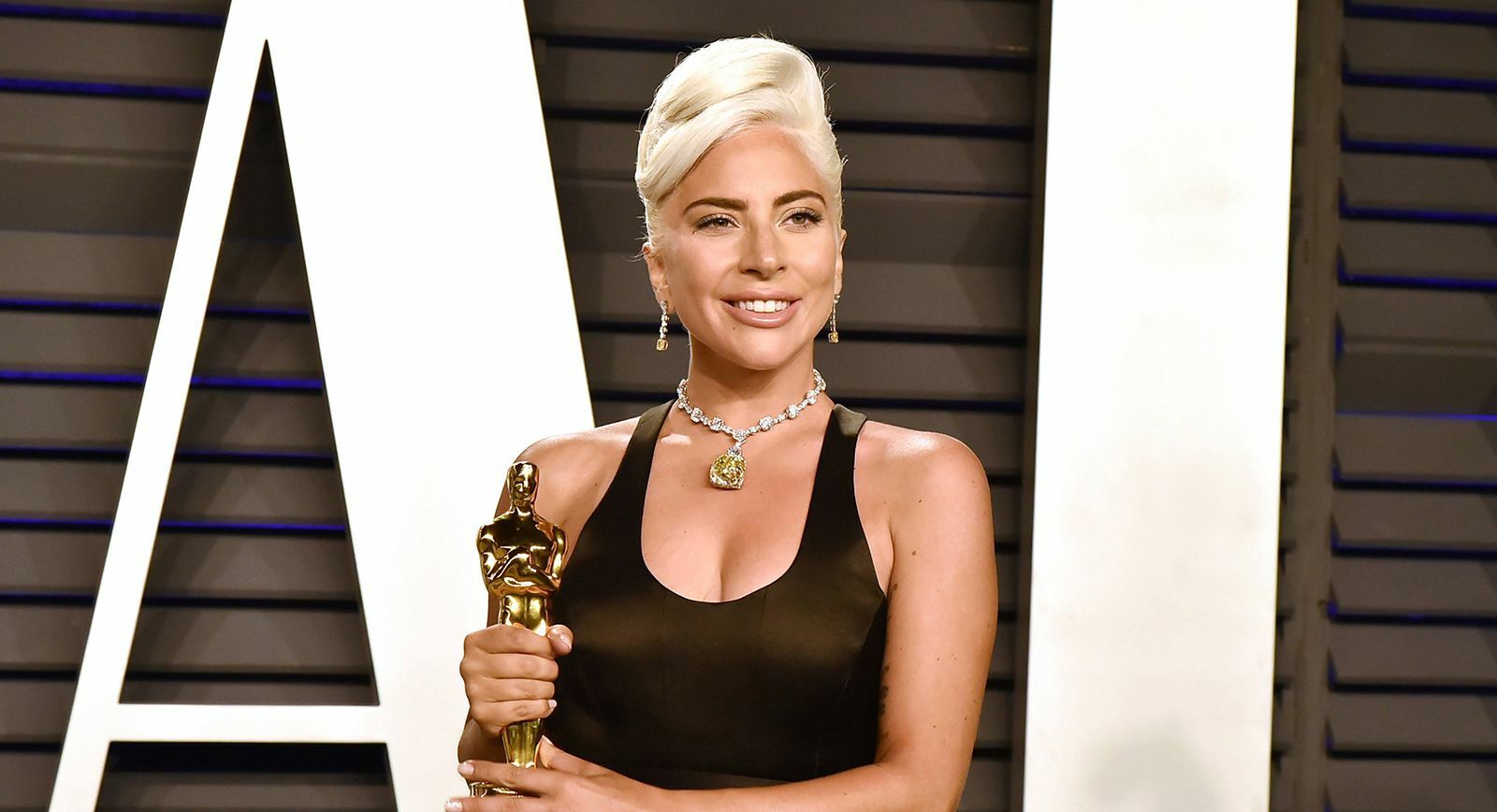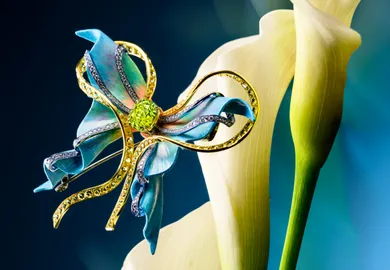
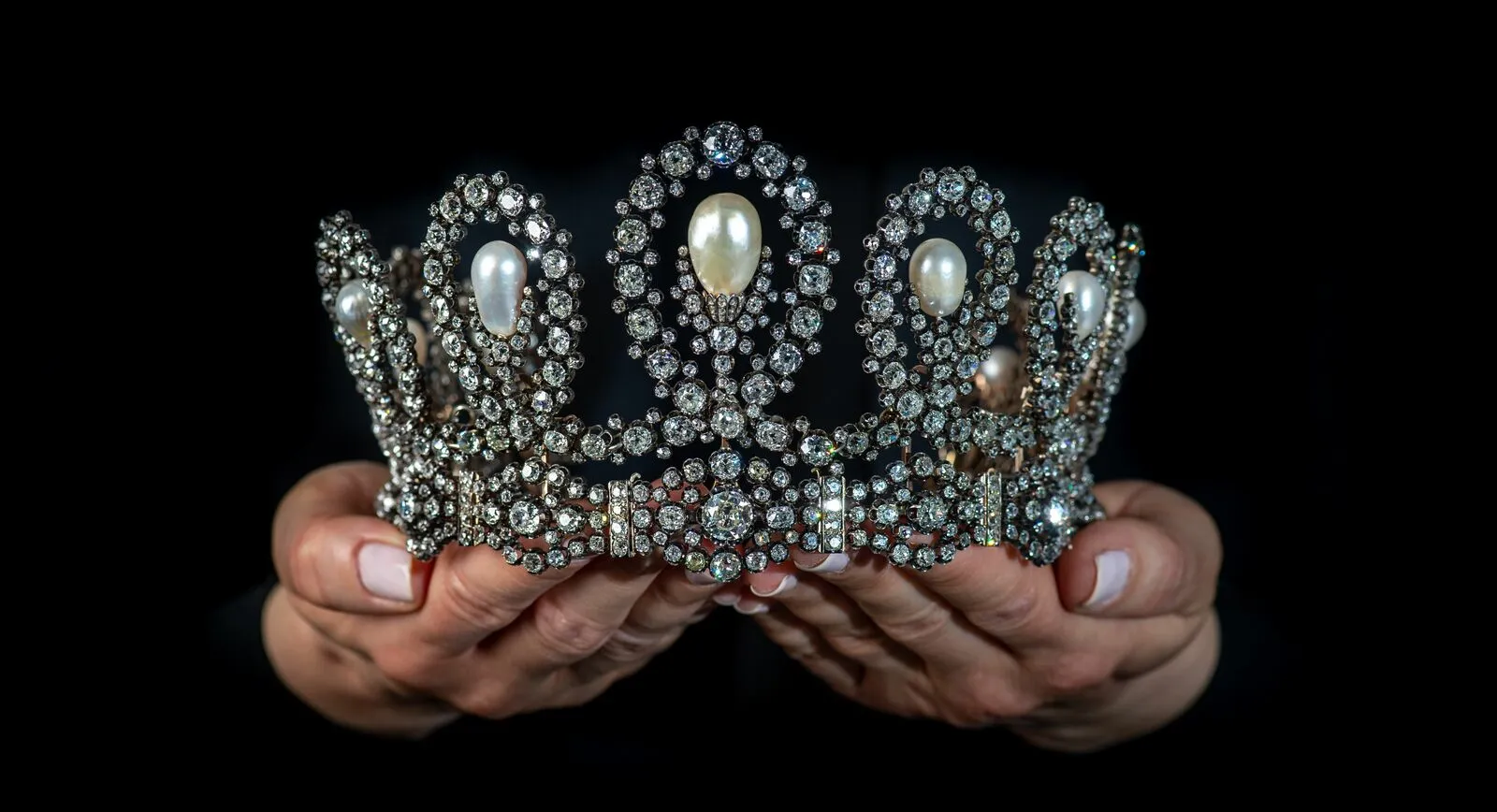
Crowning Glory: Spectacular Bridal Tiaras Through History
If there is one moment in life that is deserving of a tiara, it is a woman’s wedding day. In modern times, we tend to only see these emblems of style and status atop royal heads or at state events, but in centuries gone by, tiaras would have been an essential for courtly women and aristocrats at social events. I have been reliably informed that demand for tiaras is at record highs, so now is the perfect time to highlight some spectacular adornments from history as well as some contemporary examples as a part of Bridal week on katerinaperez.com.
I have always felt like tiaras have a natural advantage over their fellow jewellery counterparts. Whereas necklaces, bracelets and rings have degrees of formality – ranging from daytime trinkets to elaborate high jewellery creations – a tiara is specific, stately and reserved for only the most sensational of occasions and weddings are a good example.
Tiaras have been worn throughout human history, but it was in 18th century Europe that they became a must for women daring to impress in the French, British and Russian courts, among others. They were included in parures, matched to dresses and adapted to suit changing tastes. For an 18th century and 19th century high-ranking woman, a tiara was a declaration of her wealth, style, class, deportment and grace… such a lot of pressure, don’t you think?
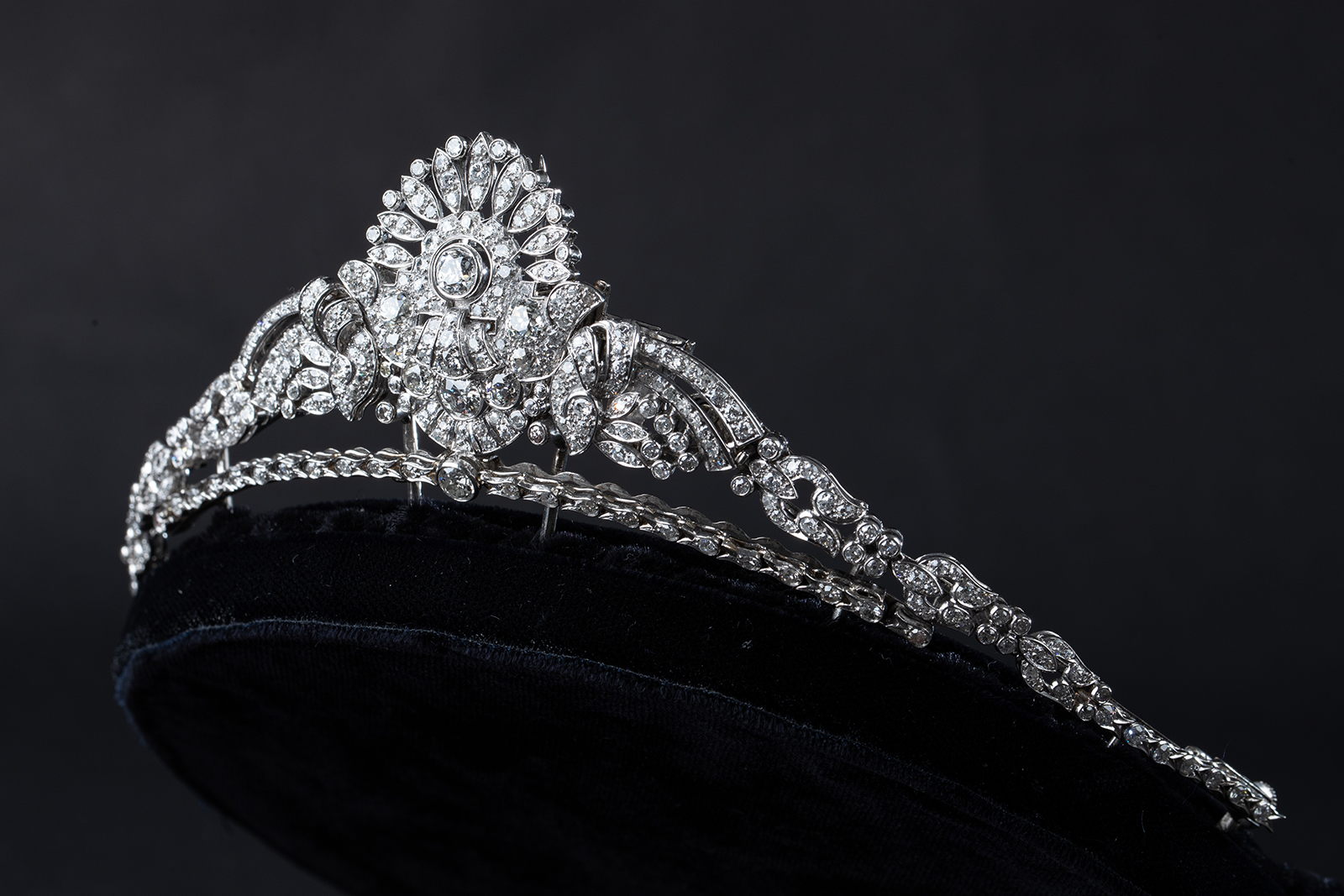
A diamond-set tiara in the collection of Susannah Lovis Jewellers
Even in these centuries gone by, a wedding was a social occasion like no other. When Princess Charlotte of Wales married Prince Leopold of Saxe Coburg in 1816, she wore a diamond tiara in the shape of woven vines, leaves and roses. Her choice set a trend that rolled across Europe, and soon brides were wearing tiaras over their veils to feel like a princess for the day. “Tiaras have always been the crowning glory of major jewellery collections but in the past decade their popularity has soared to unprecedented heights. These storied pieces are prized around the world, not only for their craftsmanship and the quality of their materials which makes them true works of art, but also for their historical and emotional resonance: a mix of magnificence and intimacy,” says Benoit Repellin, Head of Sotheby’s Geneva ‘Magnificent Jewels’ auction.
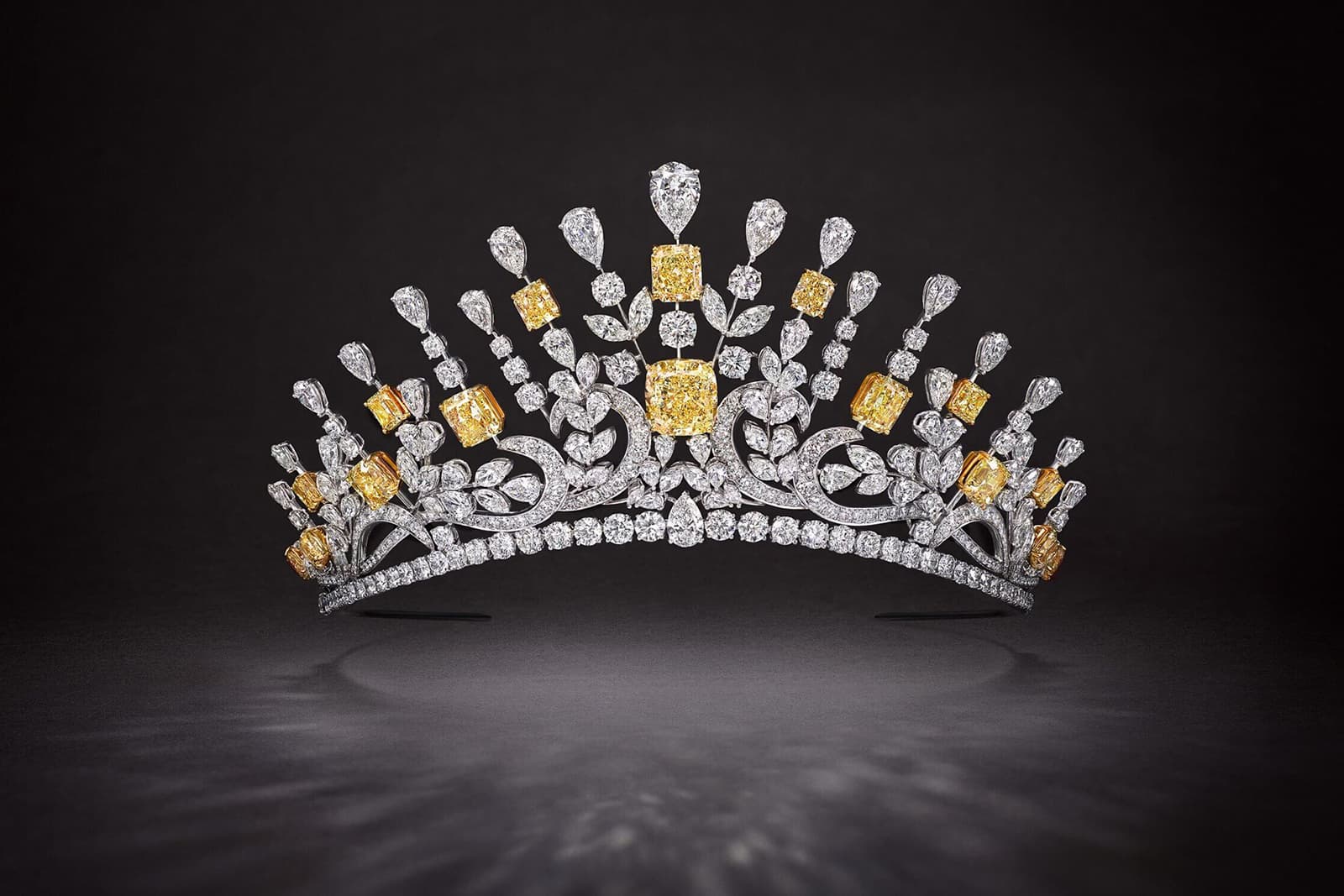
Graff tiara with 177.64 carats of white and yellow diamonds
You may be interested to know that 96% of the tiaras offered by Sotheby’s in 2020 found a buyer, with 83% of them achieving prices above their high estimate. The increased interest in tiaras has been particularly significant in Asia and a third of the tiaras offered in Sotheby’s worldwide sales were bought by Asian buyers in the past five years.
Their popularity has certainly been influenced by modern day princesses and duchesses. I’m sure like me, reader, you were dazzled by Princess Eugenie and the Greville Emerald Kokoshnik tiara she wore on her wedding day in 2018. It was created by Boucheron in 1919 and is set with a central emerald cabochon of 93.7 carats. Thomas Holman, Director of historic jeweller, Wartski, told me: “Whilst arguably there are fewer occasions where tiaras can be worn today, our interest in them has certainly not diminished. If anything, people are more fascinated in tiaras than ever before. They are the fairy tale made real. Worn to the most rarefied and prestigious occasions, they have been present at some of the most significant events in our history.”
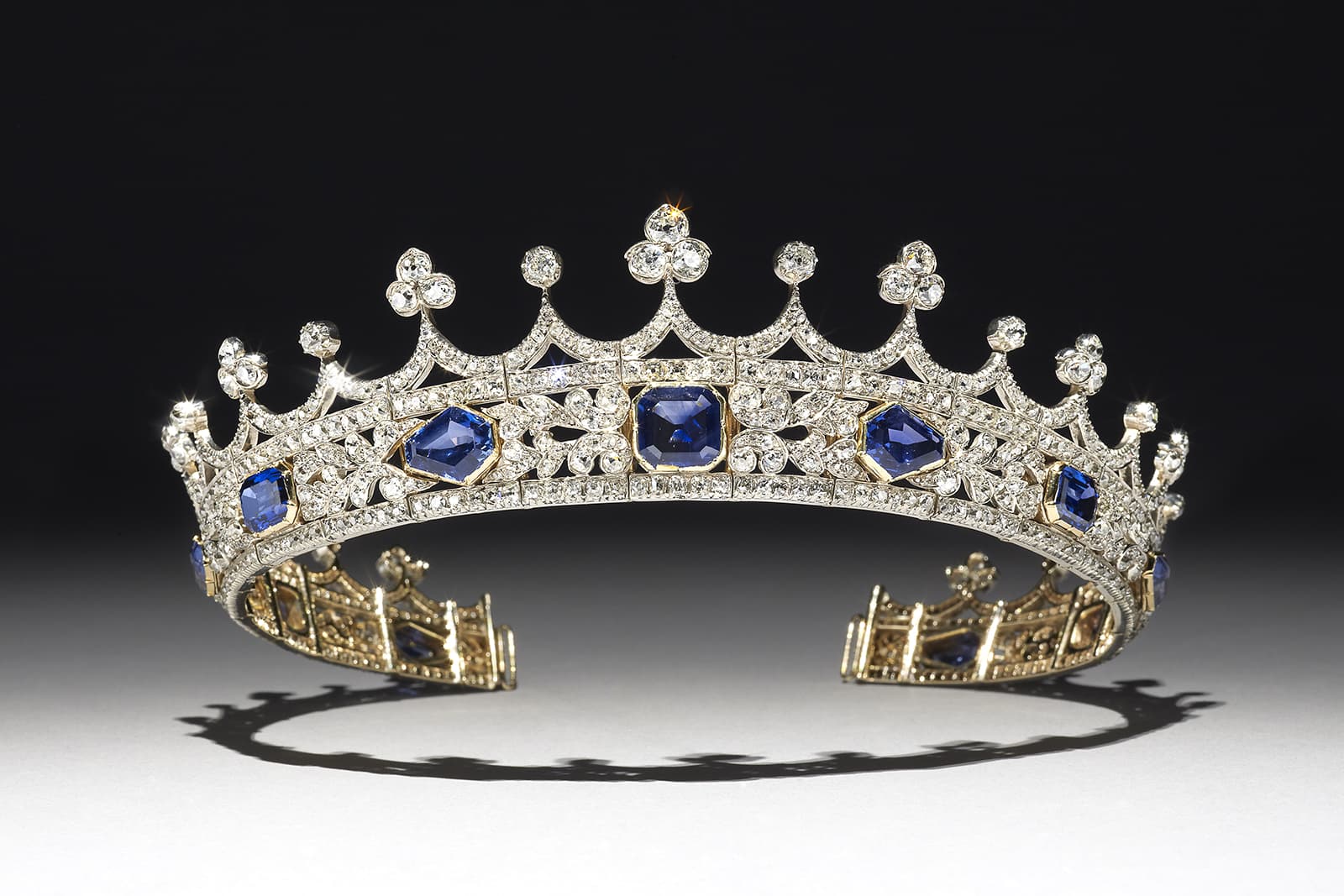
A sapphire and diamond coronet in the Gothic taste, commissioned by Prince Albert as a gift to Queen Victoria. 1840-42. Image courtesy of Wartski.
Any conversation about tiaras simply has to include Chaumet. As the maison specialises in tiaras (it has made around 3,000 in total), it is witnessing first-hand the reawakening of love for wedding day styles. Chief Executive Officer, Jean-Marc Mansvelt says: “The tiara is traditionally a wedding jewel, and we usually have two to three orders being made at once – mostly for weddings, as people see tiaras as a coronation of love. The tiara is also both a fashion accessory and a social emblem, quite literally the crowning glory, it guarantees you will be the centre of attention no matter where you are in the room. We have been known to create tiaras for clients who will wear them to the meeting of their board of directors, as a sign of power. It’s about status, and although it was unusual at first, you can totally understand why a woman would want to wear it in front of a group of men.”
A status symbol, a powerful feminine statement or a piece of adornment for one’s big day… whatever a tiara represents to the modern woman it is clear that these head adornments are here to stay. Throughout this article and below, you will find a selection of my favourite examples of spectacular tiaras, including some from the history books and some contemporary pieces that are available to purchase. I think you will agree, to truly feel like a princess, one needs to start the top and work downwards!
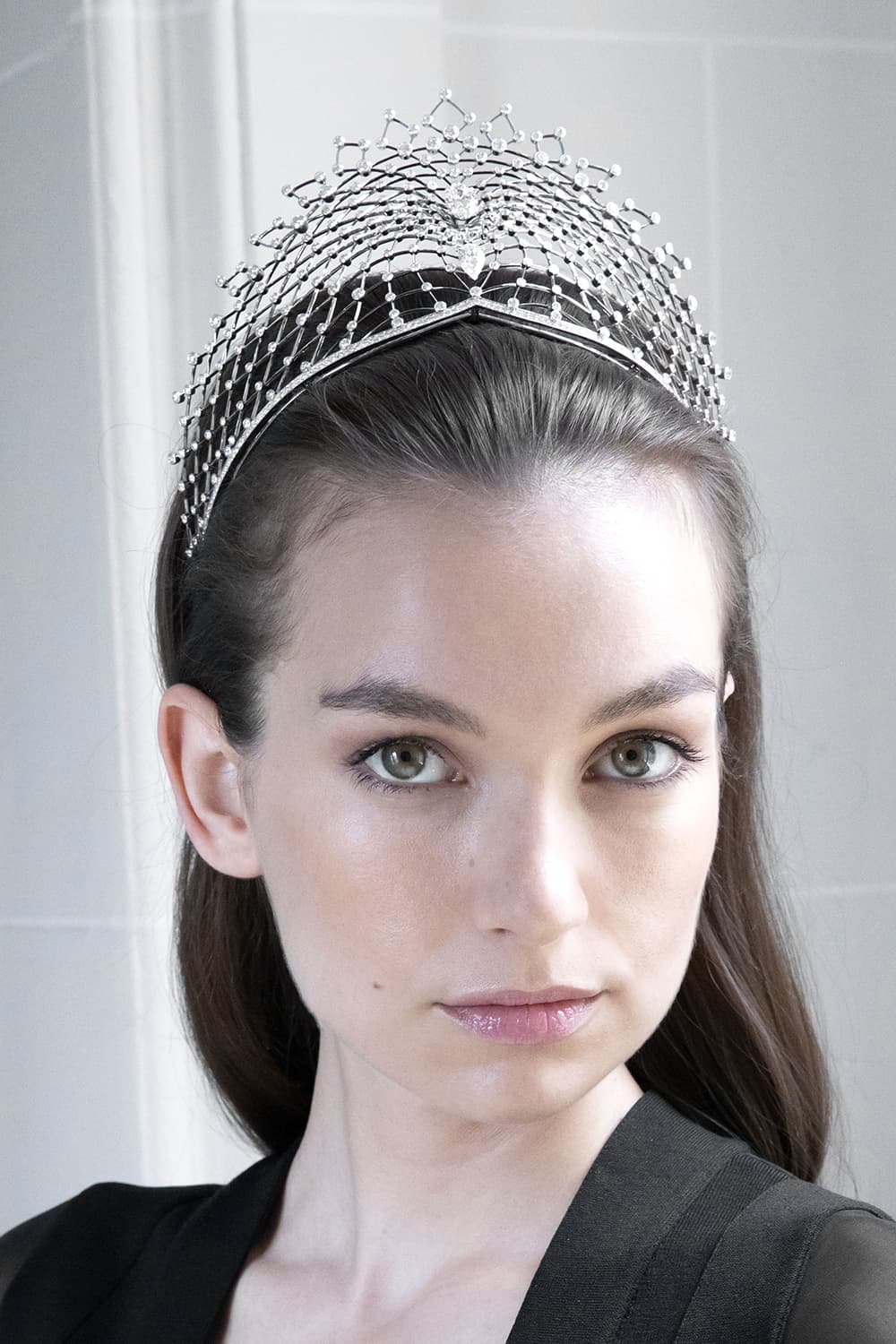
Chaumet
Chaumet
A contemporary diamond tiara
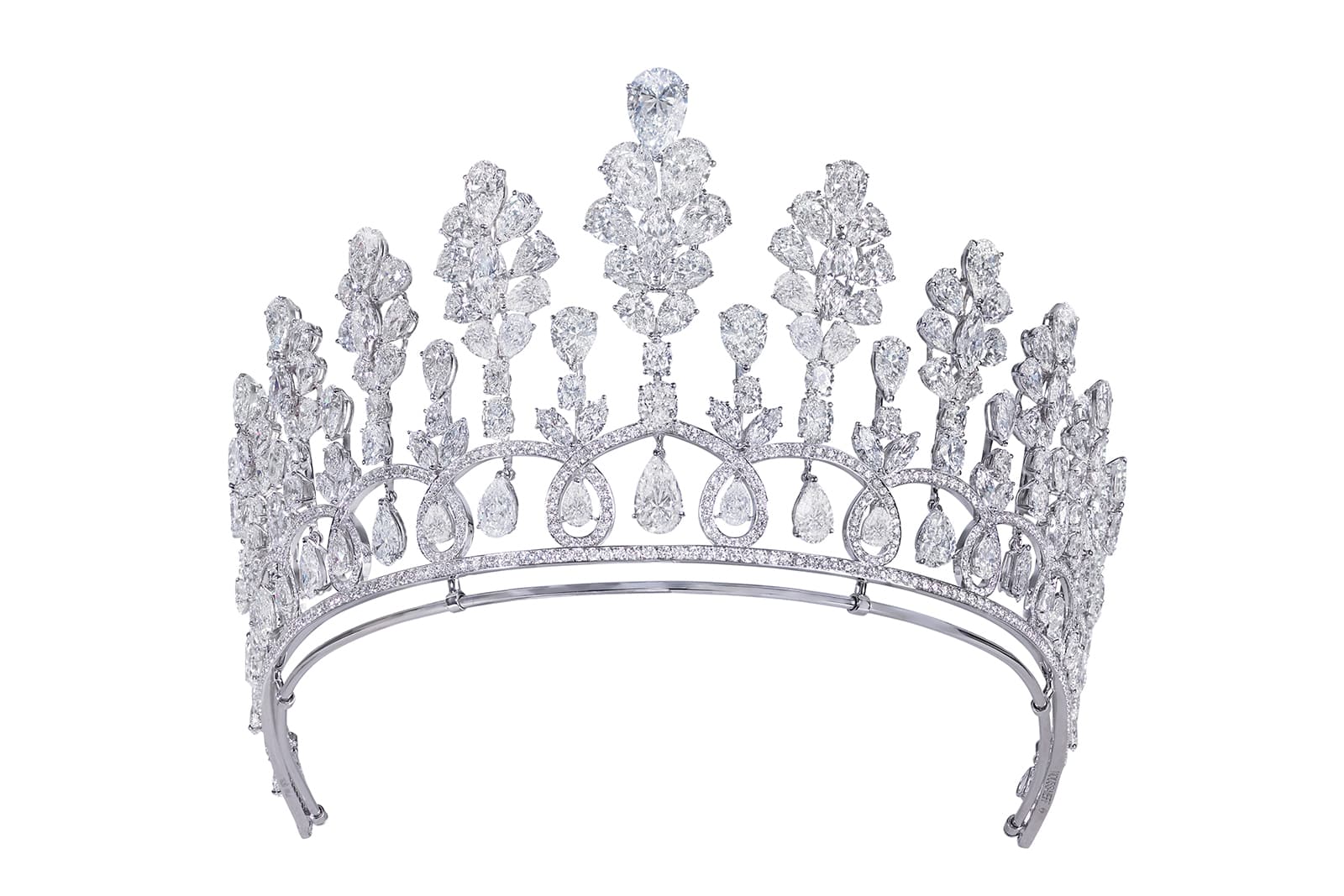
Moussaieff
Moussaieff
Tiara with 112.27 carats of pear, marquise and round shaped diamonds, with the three largest diamonds of 3.01, 2.31 and 2.02 carats, mounted in platinum and 18k white gold
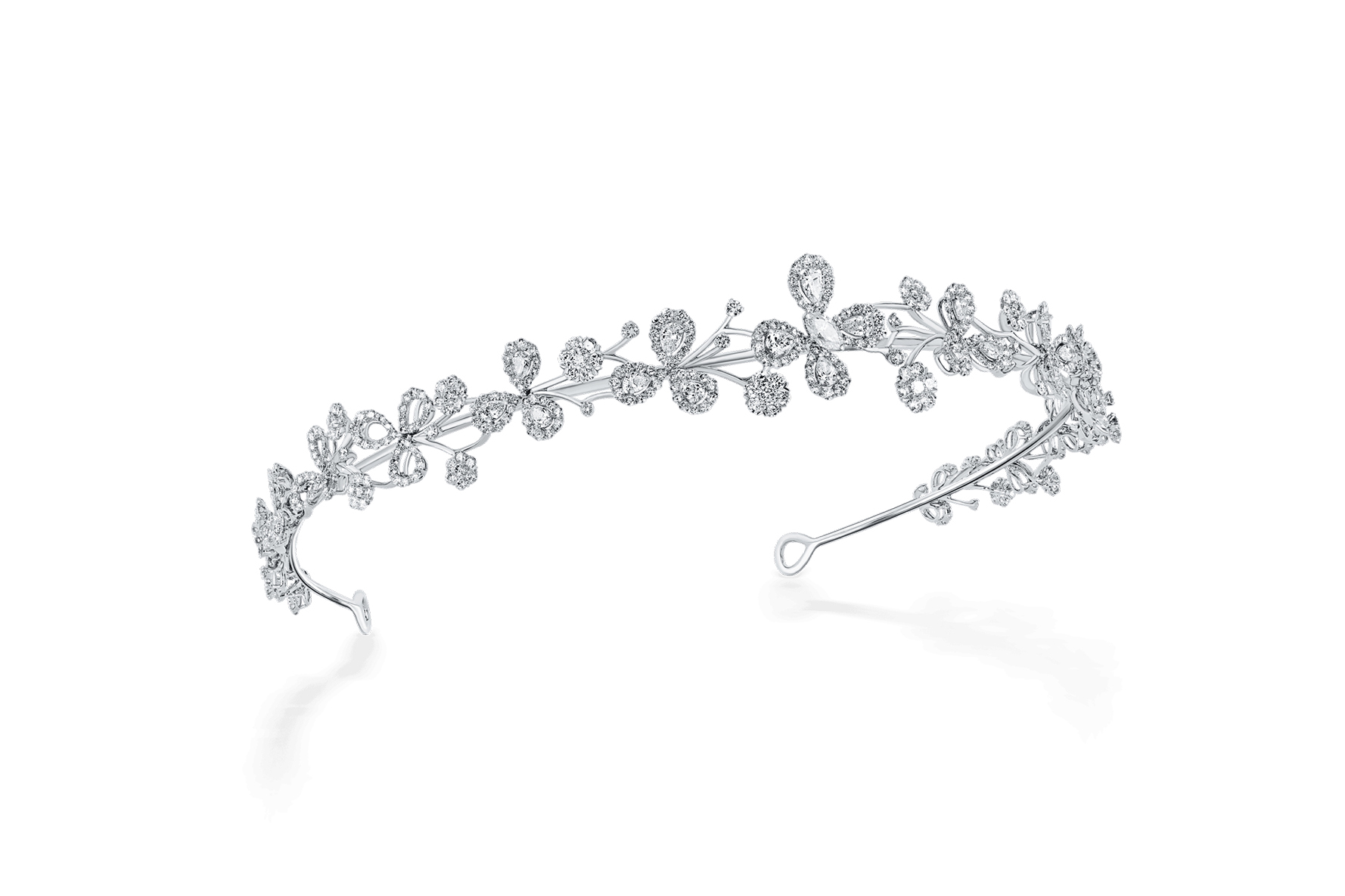
David Morris
David Morris
Floral tiara with pear-shaped and round brilliant-cut diamonds
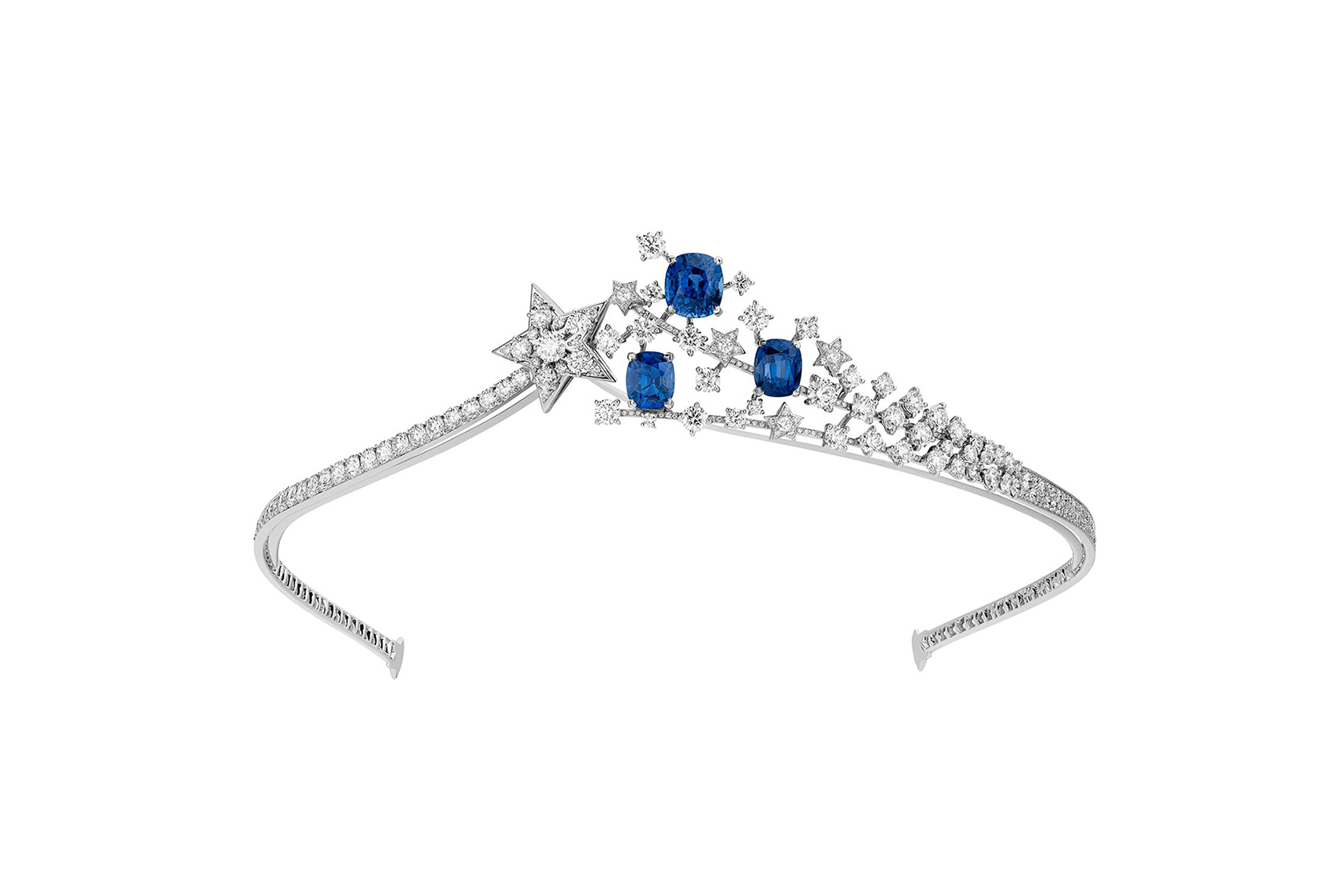
Chanel
Chanel
Contemporary sapphire and diamond tiara
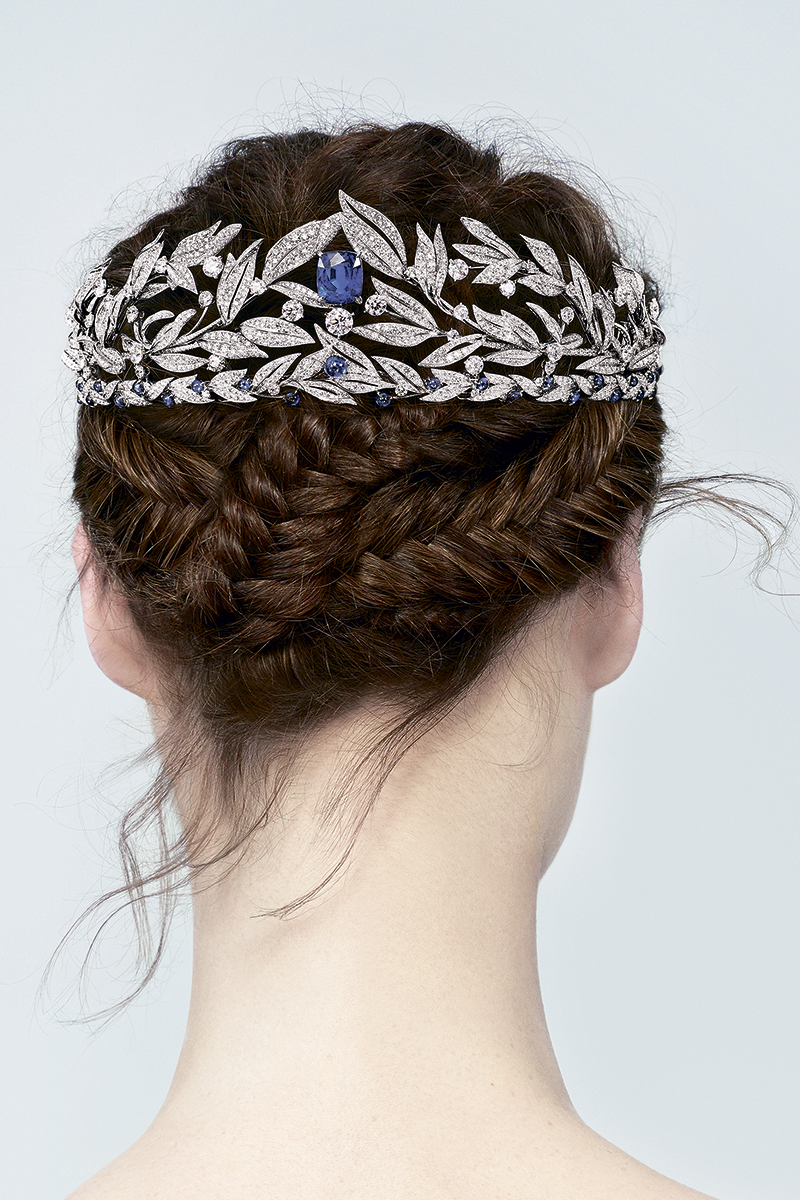
Chaumet
Chaumet
Firmament Apollinien tiara in white gold with diamonds and sapphires from the La Nature de Chaumet collection
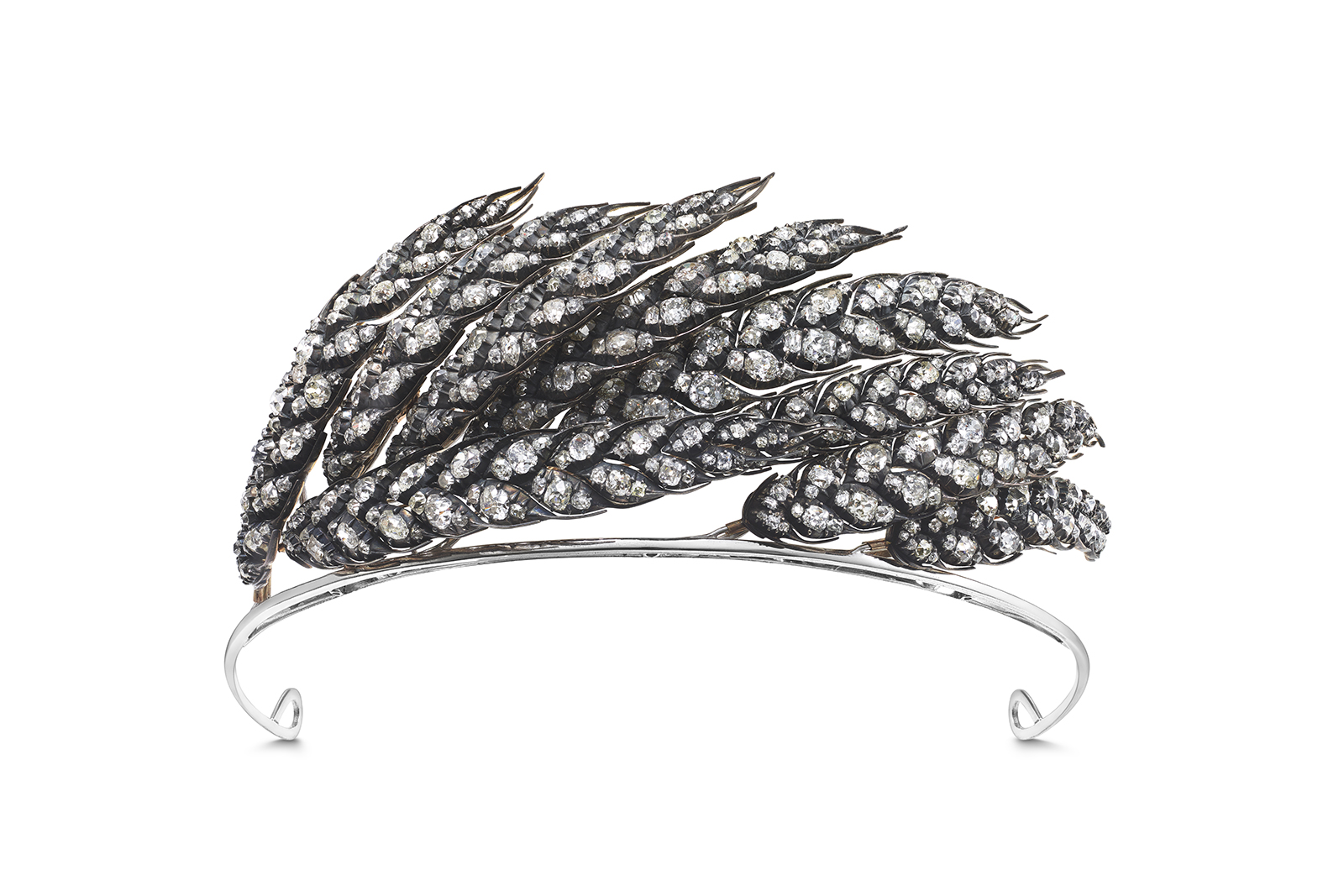
Chaumet
Chaumet
Epi de Blé tiara, circa 1910
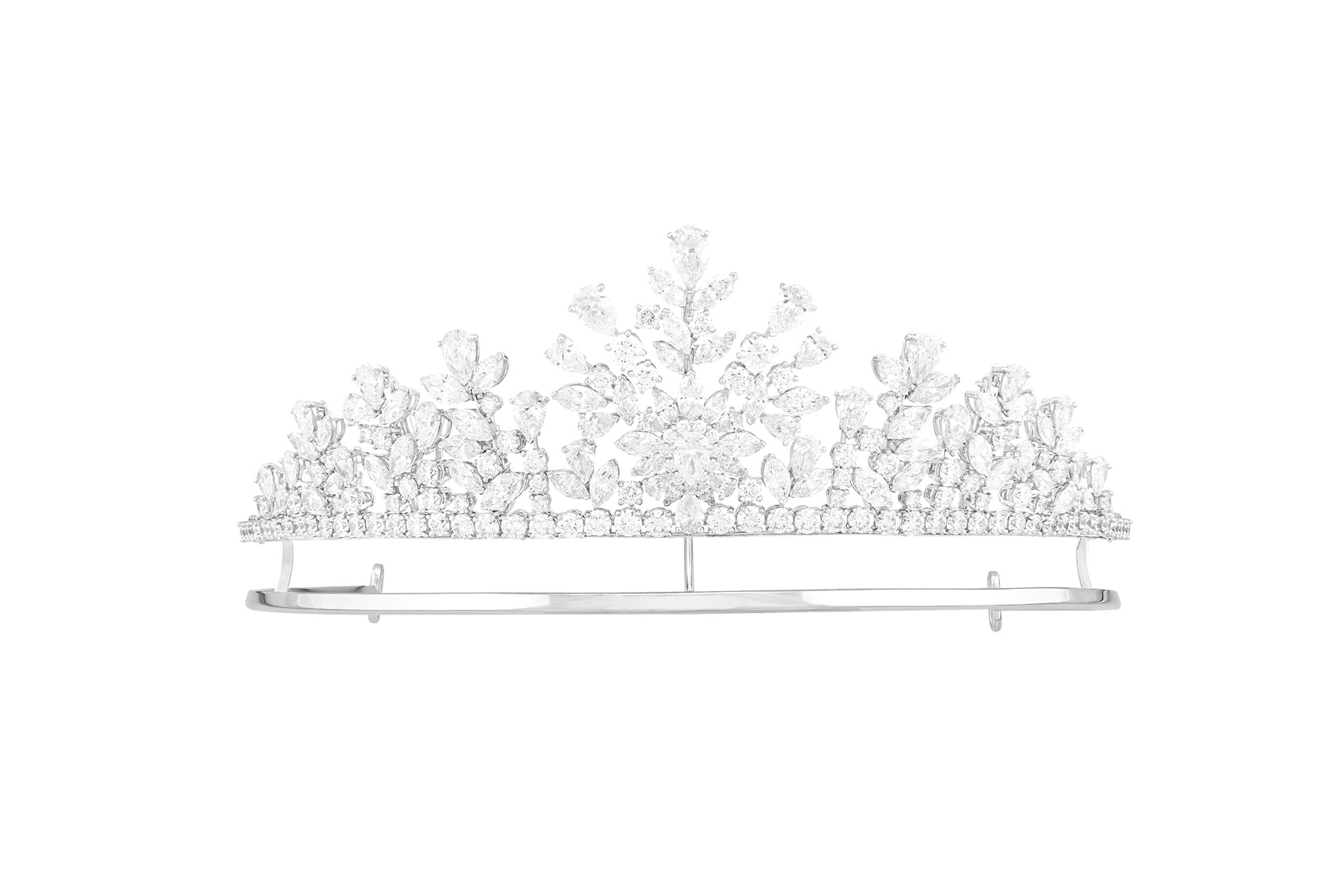
Van Cleef & Arpels
Van Cleef & Arpels
Héloïse diamond necklace that can be transformed into a tiara
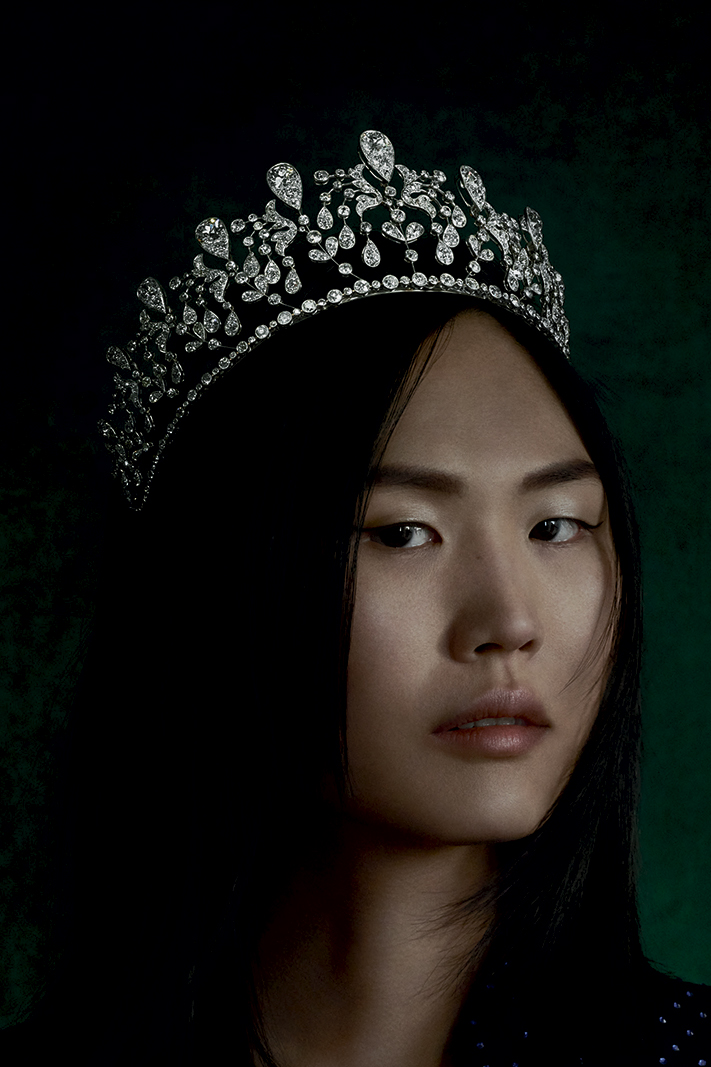
Chaumet
Chaumet
Fuchsias tiara, also known as the Bourbon-Parma tiara, crafted by Joseph Chaumet, circa 1919, in platinum and diamonds
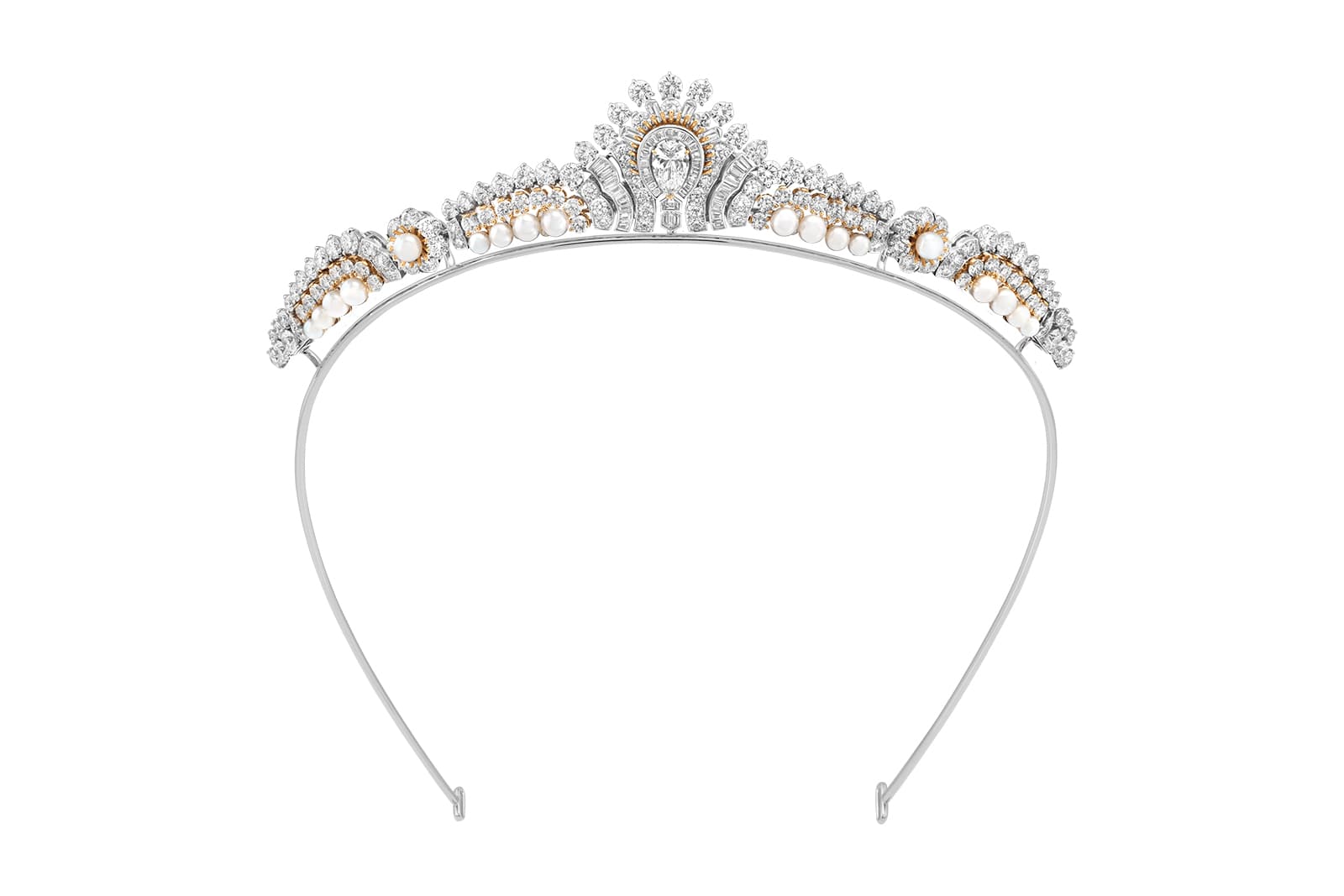
Van Cleef & Arpels
Van Cleef & Arpels
Hélios tiara with diamonds and pearls
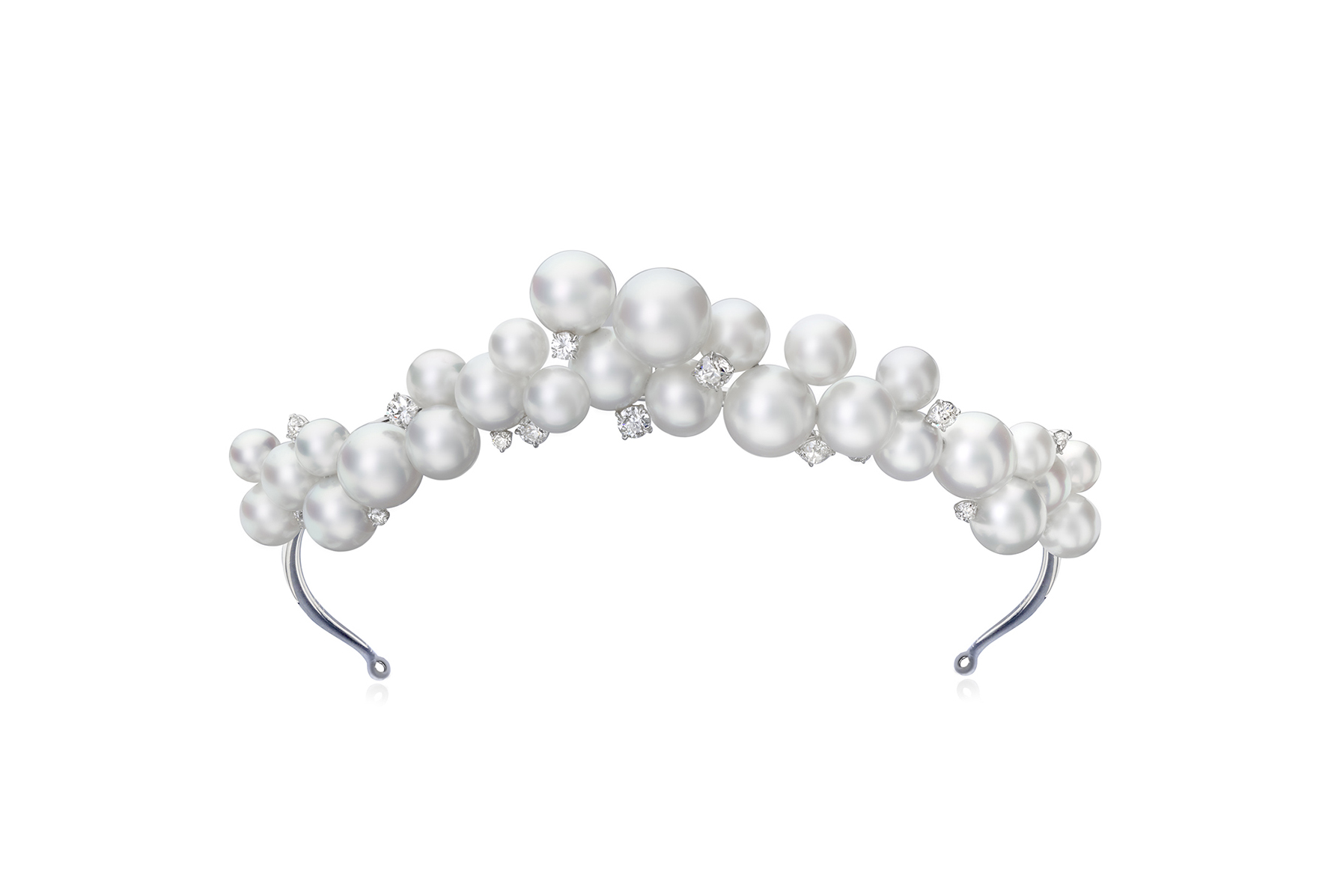
Assael
Assael
Pearl and diamond tiara
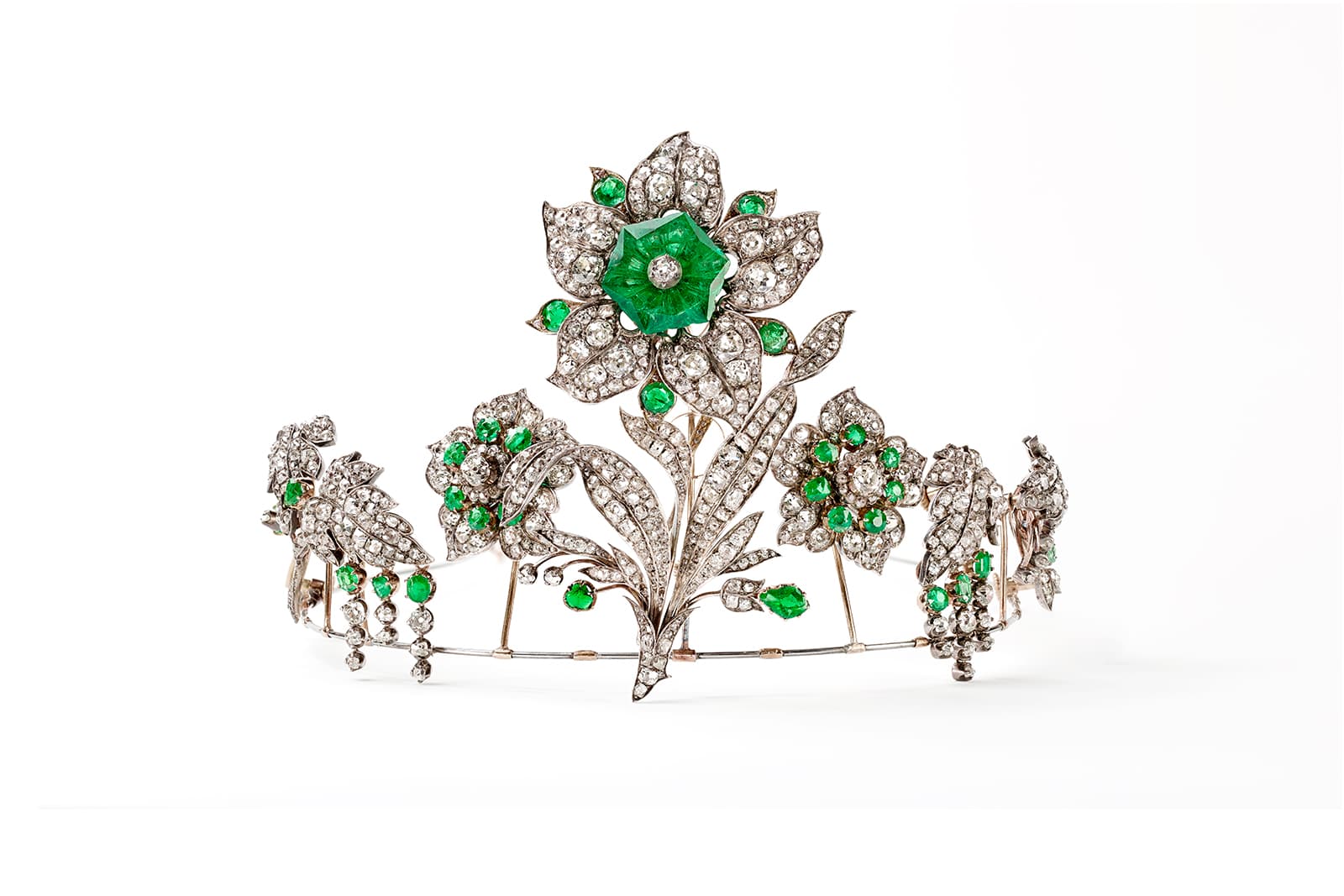
Chaumet
Chaumet
Transformable Leuchtenberg tiara that can be worn as a brooch and hair ornaments, crafted by Jean-Baptiste Fossin, circa 1830-40, in gold, silver, diamonds and emerald
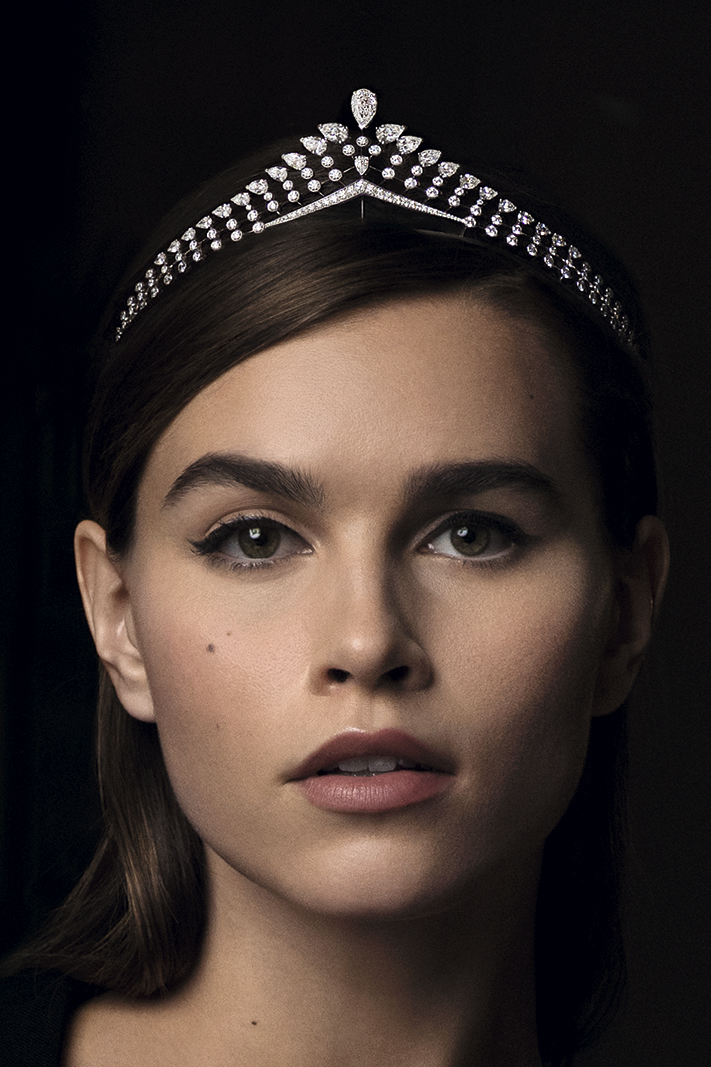
Chaumet
Chaumet
Joséphine Valse Impériale tiara in white gold, set with a pear-shaped diamond of approximately 2.50 carats, eight pear-shaped diamonds for approximately 5.30 carats, brilliant-cut and pear-shaped diamonds
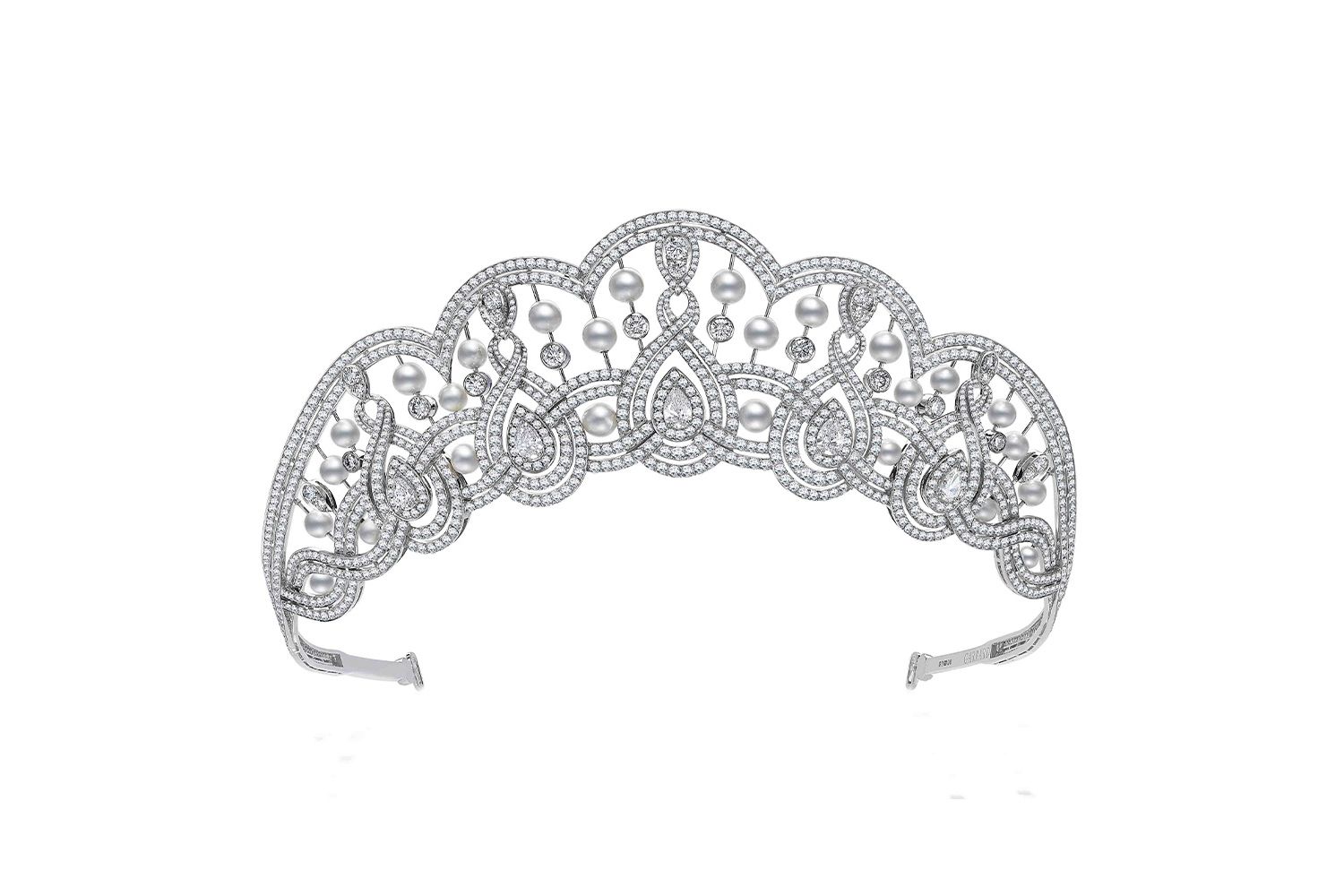
Garrad
Garrad
Garland tiara in 18k white gold with white pearls and pear- and round-shaped white diamonds
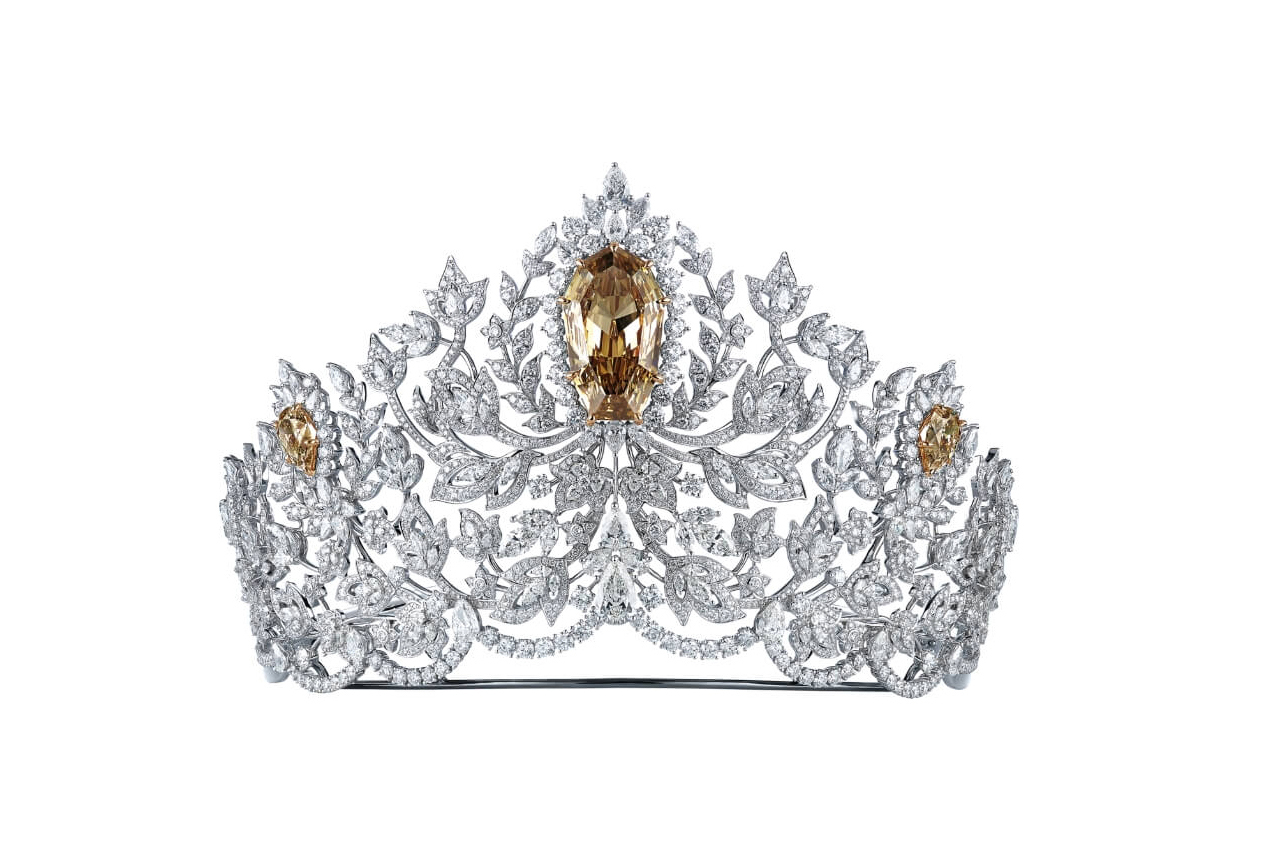
Mouawad
Mouawad
Miss Universe Power of Unity crown with 1,728 white diamonds, three golden canary diamonds originating from Botswana, and a central golden canary diamond weighing 62.83 carats
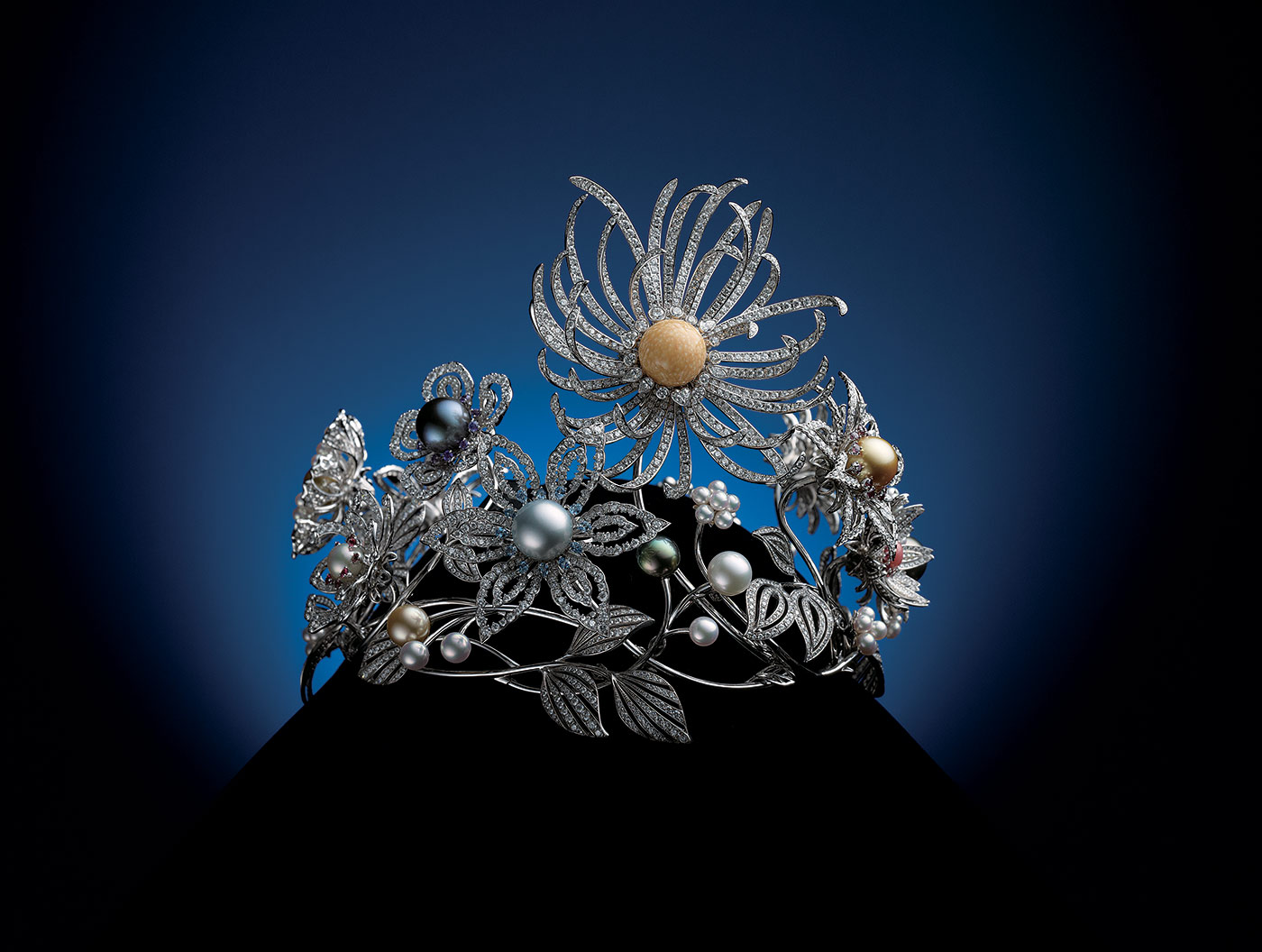
Mikimoto
Mikimoto
Mikimoto ‘Dreams & Pearls’ crown with melo and conch pearls, Japanese Akoya and black, white and golden South Sea pearls, alongside coloured gemstones and diamonds, created to celebrate the brand’s 120th anniversary in 2013
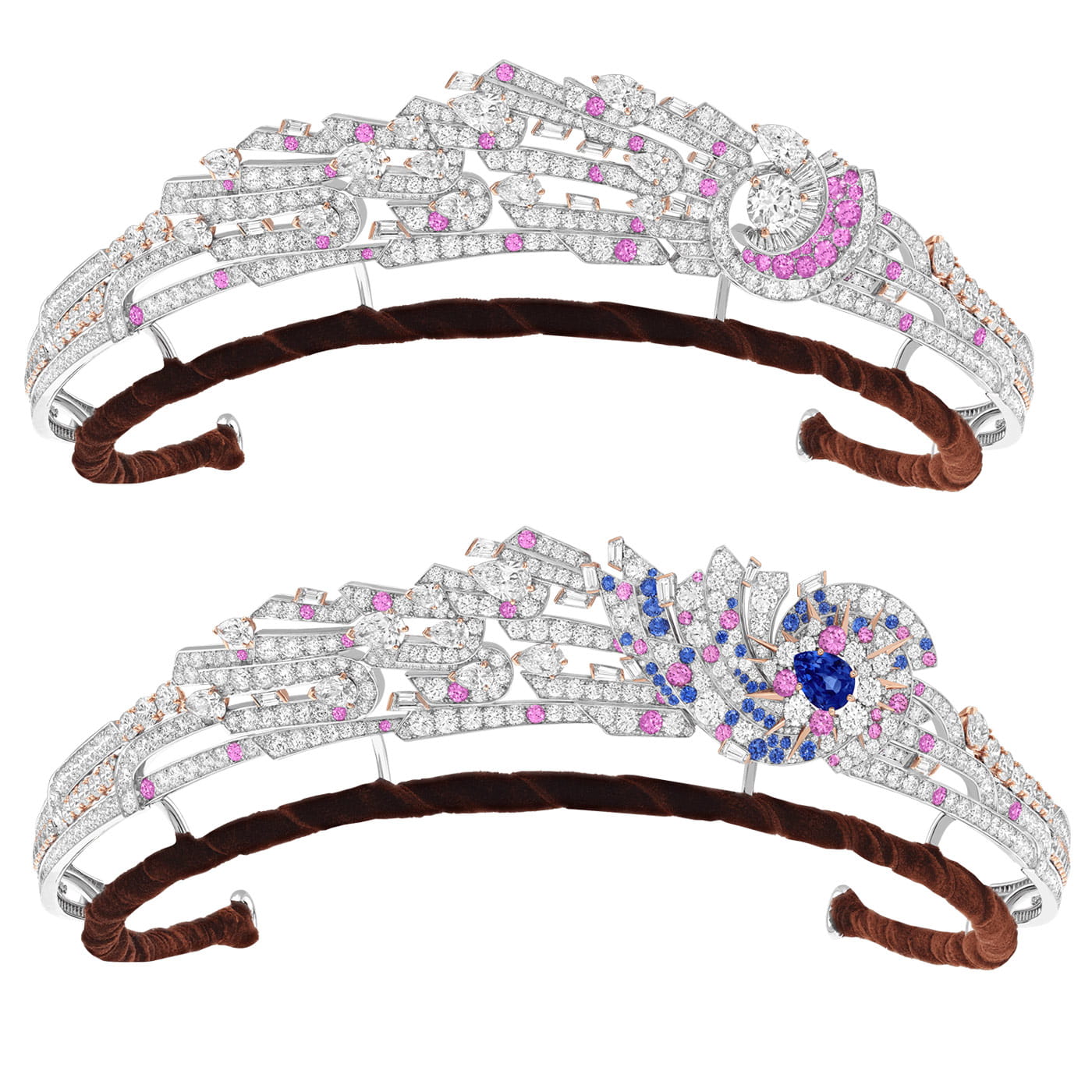
Van Cleef & Arpels
Van Cleef & Arpels
Andromède tiara with interchangeable gem-set clips from the Sous les étoiles High Jewellery collection, including a 2.64 carat Madagascan sapphire, one round diamond of 2.50 carats, pear-shaped diamonds and pink and blue sapphires

WORDS
Katerina Perez is a jewellery insider, journalist and brand consultant with more than 15 years’ experience in the jewellery sector. Paris-based, Katerina has worked as a freelance journalist and content editor since 2011, writing articles for international publications. To share her jewellery knowledge and expertise, Katerina founded this website and launched her @katerina_perez Instagram in 2013.

Crowning Glory: Spectacular Bridal Tiaras Through History
If there is one moment in life that is deserving of a tiara, it is a woman’s wedding day. In modern times, we tend to only see these emblems of style and status atop royal heads or at state events, but in centuries gone by, tiaras would have been an essential for courtly women and aristocrats at social events. I have been reliably informed that demand for tiaras is at record highs, so now is the perfect time to highlight some spectacular adornments from history as well as some contemporary examples as a part of Bridal week on katerinaperez.com.
I have always felt like tiaras have a natural advantage over their fellow jewellery counterparts. Whereas necklaces, bracelets and rings have degrees of formality – ranging from daytime trinkets to elaborate high jewellery creations – a tiara is specific, stately and reserved for only the most sensational of occasions and weddings are a good example.
Tiaras have been worn throughout human history, but it was in 18th century Europe that they became a must for women daring to impress in the French, British and Russian courts, among others. They were included in parures, matched to dresses and adapted to suit changing tastes. For an 18th century and 19th century high-ranking woman, a tiara was a declaration of her wealth, style, class, deportment and grace… such a lot of pressure, don’t you think?

A diamond-set tiara in the collection of Susannah Lovis Jewellers
Even in these centuries gone by, a wedding was a social occasion like no other. When Princess Charlotte of Wales married Prince Leopold of Saxe Coburg in 1816, she wore a diamond tiara in the shape of woven vines, leaves and roses. Her choice set a trend that rolled across Europe, and soon brides were wearing tiaras over their veils to feel like a princess for the day. “Tiaras have always been the crowning glory of major jewellery collections but in the past decade their popularity has soared to unprecedented heights. These storied pieces are prized around the world, not only for their craftsmanship and the quality of their materials which makes them true works of art, but also for their historical and emotional resonance: a mix of magnificence and intimacy,” says Benoit Repellin, Head of Sotheby’s Geneva ‘Magnificent Jewels’ auction.

Graff tiara with 177.64 carats of white and yellow diamonds
You may be interested to know that 96% of the tiaras offered by Sotheby’s in 2020 found a buyer, with 83% of them achieving prices above their high estimate. The increased interest in tiaras has been particularly significant in Asia and a third of the tiaras offered in Sotheby’s worldwide sales were bought by Asian buyers in the past five years.
Their popularity has certainly been influenced by modern day princesses and duchesses. I’m sure like me, reader, you were dazzled by Princess Eugenie and the Greville Emerald Kokoshnik tiara she wore on her wedding day in 2018. It was created by Boucheron in 1919 and is set with a central emerald cabochon of 93.7 carats. Thomas Holman, Director of historic jeweller, Wartski, told me: “Whilst arguably there are fewer occasions where tiaras can be worn today, our interest in them has certainly not diminished. If anything, people are more fascinated in tiaras than ever before. They are the fairy tale made real. Worn to the most rarefied and prestigious occasions, they have been present at some of the most significant events in our history.”

A sapphire and diamond coronet in the Gothic taste, commissioned by Prince Albert as a gift to Queen Victoria. 1840-42. Image courtesy of Wartski.
Any conversation about tiaras simply has to include Chaumet. As the maison specialises in tiaras (it has made around 3,000 in total), it is witnessing first-hand the reawakening of love for wedding day styles. Chief Executive Officer, Jean-Marc Mansvelt says: “The tiara is traditionally a wedding jewel, and we usually have two to three orders being made at once – mostly for weddings, as people see tiaras as a coronation of love. The tiara is also both a fashion accessory and a social emblem, quite literally the crowning glory, it guarantees you will be the centre of attention no matter where you are in the room. We have been known to create tiaras for clients who will wear them to the meeting of their board of directors, as a sign of power. It’s about status, and although it was unusual at first, you can totally understand why a woman would want to wear it in front of a group of men.”
A status symbol, a powerful feminine statement or a piece of adornment for one’s big day… whatever a tiara represents to the modern woman it is clear that these head adornments are here to stay. Throughout this article and below, you will find a selection of my favourite examples of spectacular tiaras, including some from the history books and some contemporary pieces that are available to purchase. I think you will agree, to truly feel like a princess, one needs to start the top and work downwards!

Chaumet
Chaumet
A contemporary diamond tiara

Moussaieff
Moussaieff
Tiara with 112.27 carats of pear, marquise and round shaped diamonds, with the three largest diamonds of 3.01, 2.31 and 2.02 carats, mounted in platinum and 18k white gold

David Morris
David Morris
Floral tiara with pear-shaped and round brilliant-cut diamonds

Chanel
Chanel
Contemporary sapphire and diamond tiara

Chaumet
Chaumet
Firmament Apollinien tiara in white gold with diamonds and sapphires from the La Nature de Chaumet collection

Chaumet
Chaumet
Epi de Blé tiara, circa 1910

Van Cleef & Arpels
Van Cleef & Arpels
Héloïse diamond necklace that can be transformed into a tiara

Chaumet
Chaumet
Fuchsias tiara, also known as the Bourbon-Parma tiara, crafted by Joseph Chaumet, circa 1919, in platinum and diamonds

Van Cleef & Arpels
Van Cleef & Arpels
Hélios tiara with diamonds and pearls

Assael
Assael
Pearl and diamond tiara

Chaumet
Chaumet
Transformable Leuchtenberg tiara that can be worn as a brooch and hair ornaments, crafted by Jean-Baptiste Fossin, circa 1830-40, in gold, silver, diamonds and emerald

Chaumet
Chaumet
Joséphine Valse Impériale tiara in white gold, set with a pear-shaped diamond of approximately 2.50 carats, eight pear-shaped diamonds for approximately 5.30 carats, brilliant-cut and pear-shaped diamonds

Garrad
Garrad
Garland tiara in 18k white gold with white pearls and pear- and round-shaped white diamonds

Mouawad
Mouawad
Miss Universe Power of Unity crown with 1,728 white diamonds, three golden canary diamonds originating from Botswana, and a central golden canary diamond weighing 62.83 carats

Mikimoto
Mikimoto
Mikimoto ‘Dreams & Pearls’ crown with melo and conch pearls, Japanese Akoya and black, white and golden South Sea pearls, alongside coloured gemstones and diamonds, created to celebrate the brand’s 120th anniversary in 2013

Van Cleef & Arpels
Van Cleef & Arpels
Andromède tiara with interchangeable gem-set clips from the Sous les étoiles High Jewellery collection, including a 2.64 carat Madagascan sapphire, one round diamond of 2.50 carats, pear-shaped diamonds and pink and blue sapphires

WORDS
Katerina Perez is a jewellery insider, journalist and brand consultant with more than 15 years’ experience in the jewellery sector. Paris-based, Katerina has worked as a freelance journalist and content editor since 2011, writing articles for international publications. To share her jewellery knowledge and expertise, Katerina founded this website and launched her @katerina_perez Instagram in 2013.
